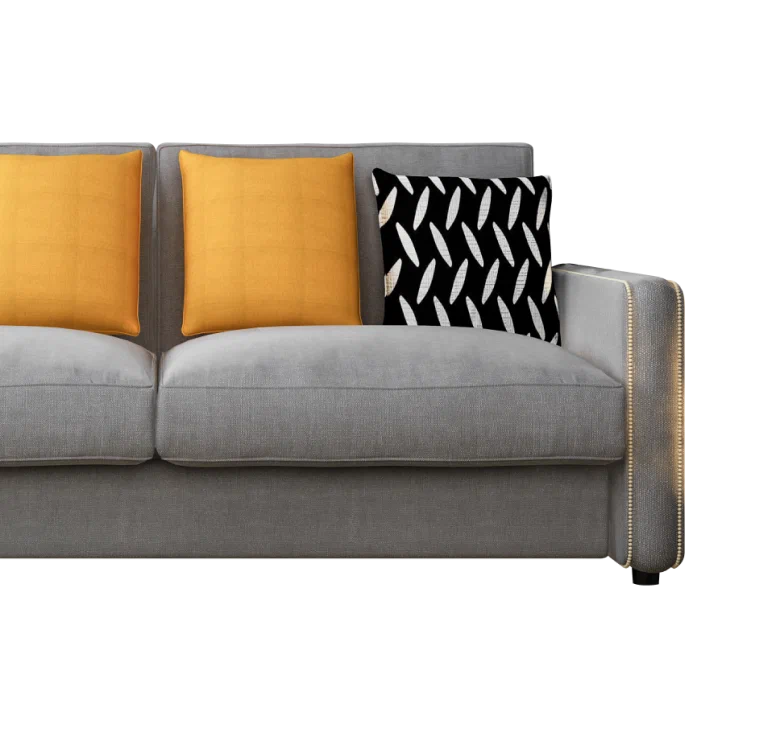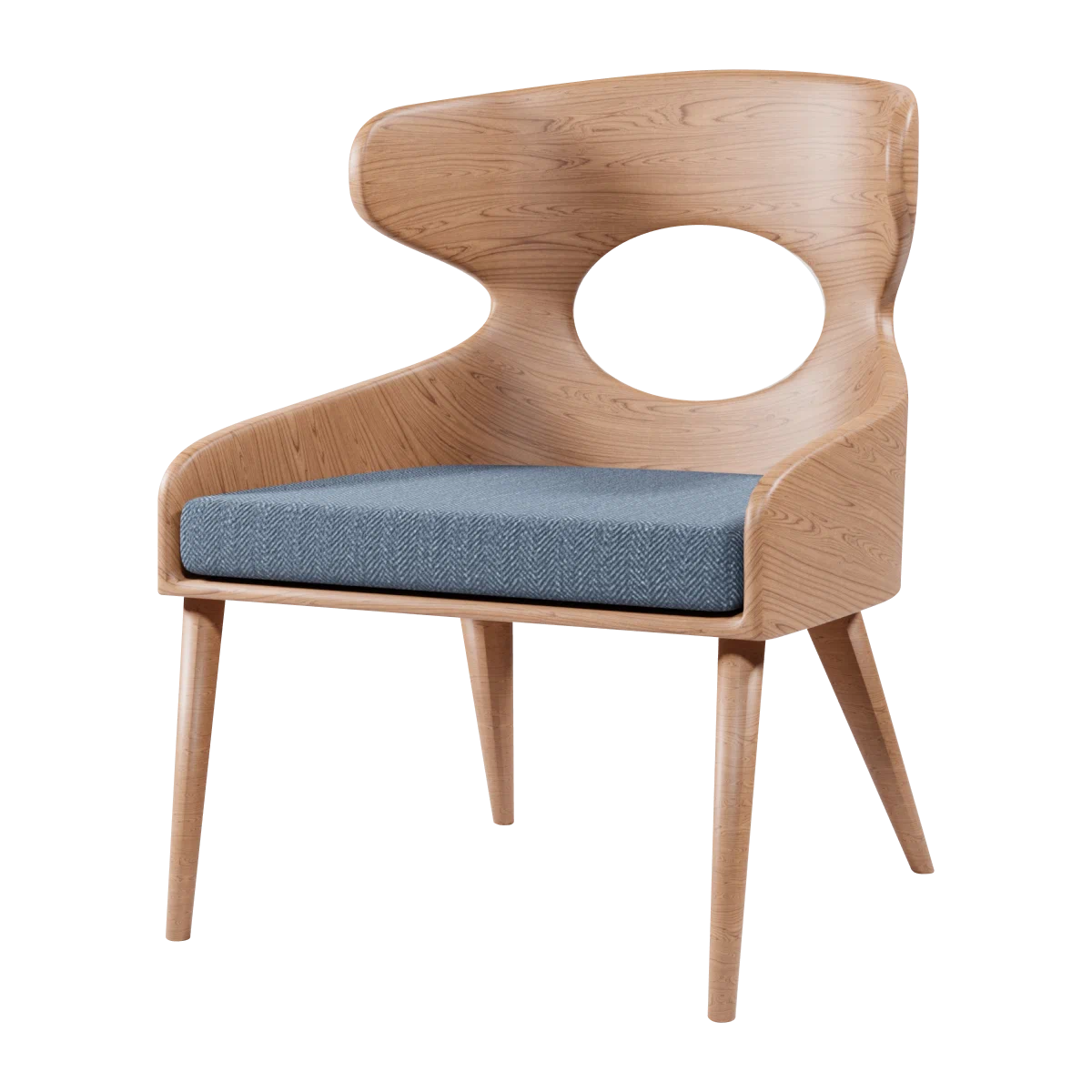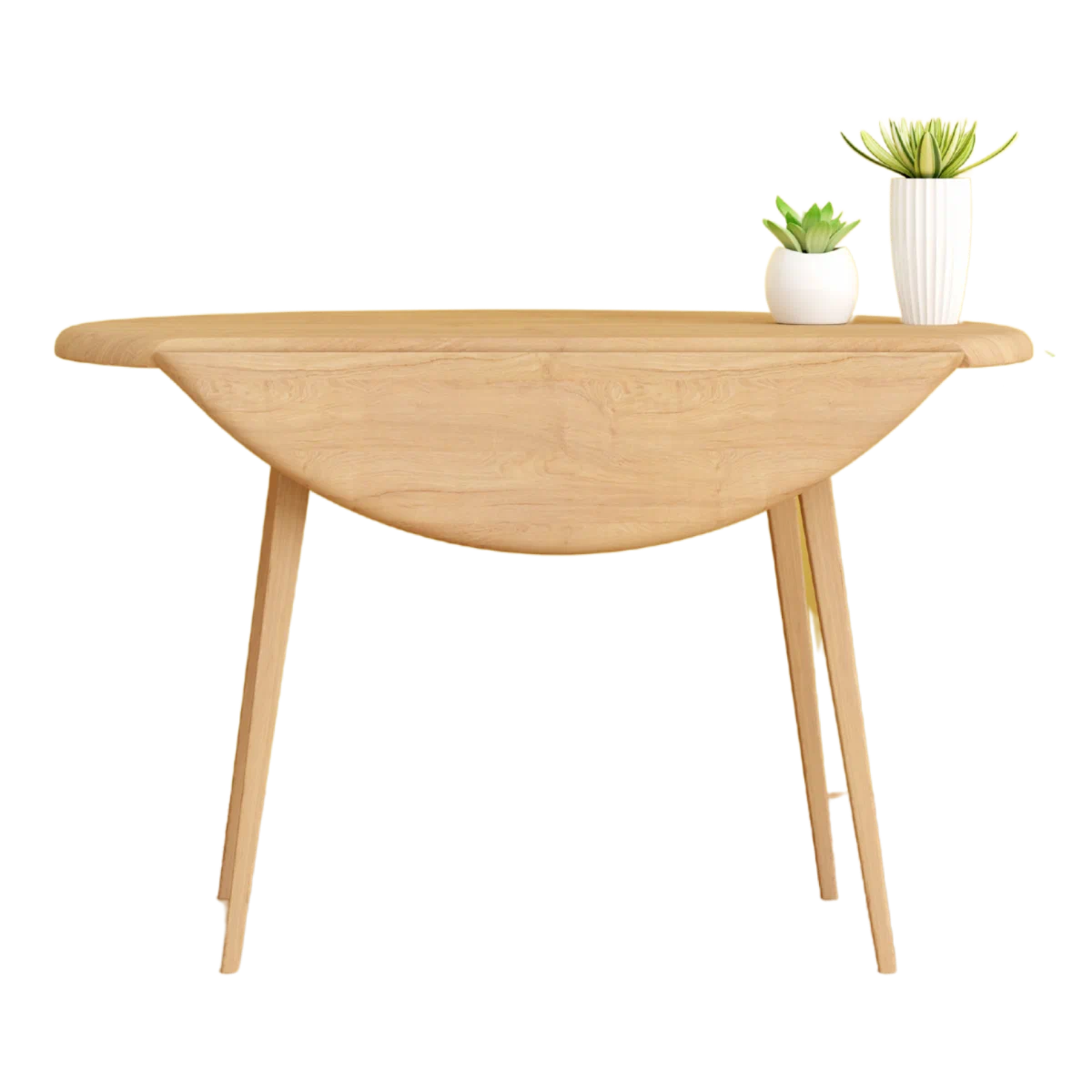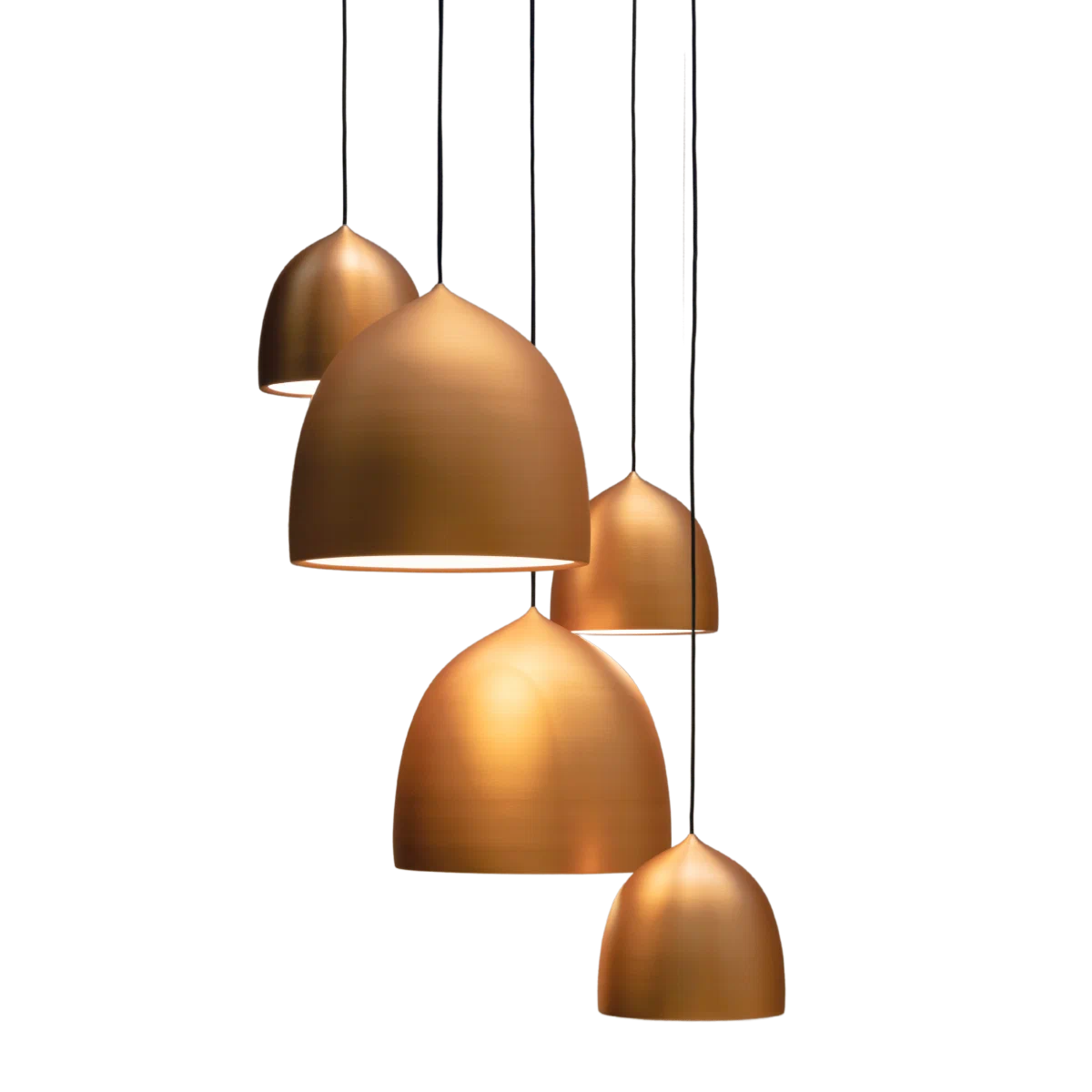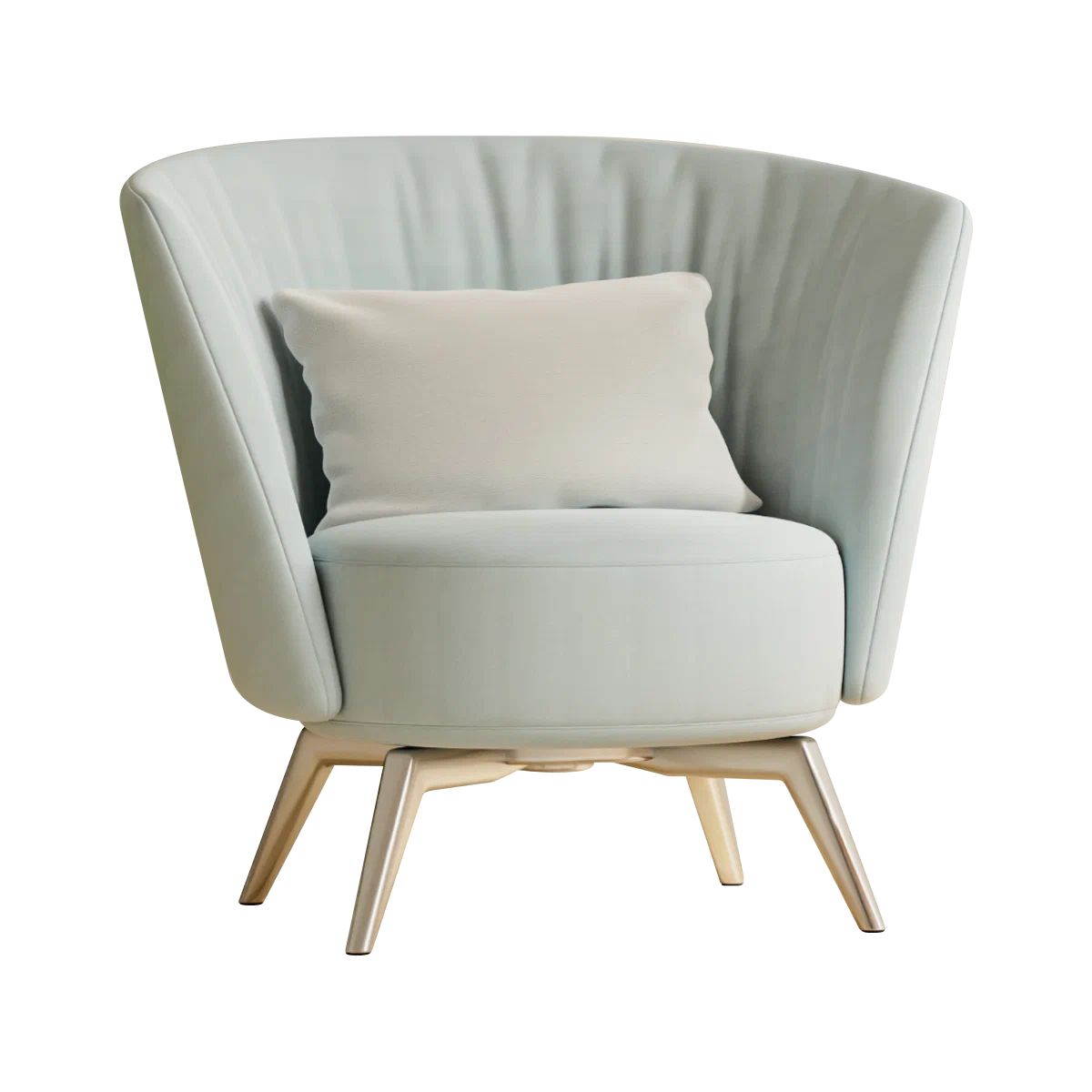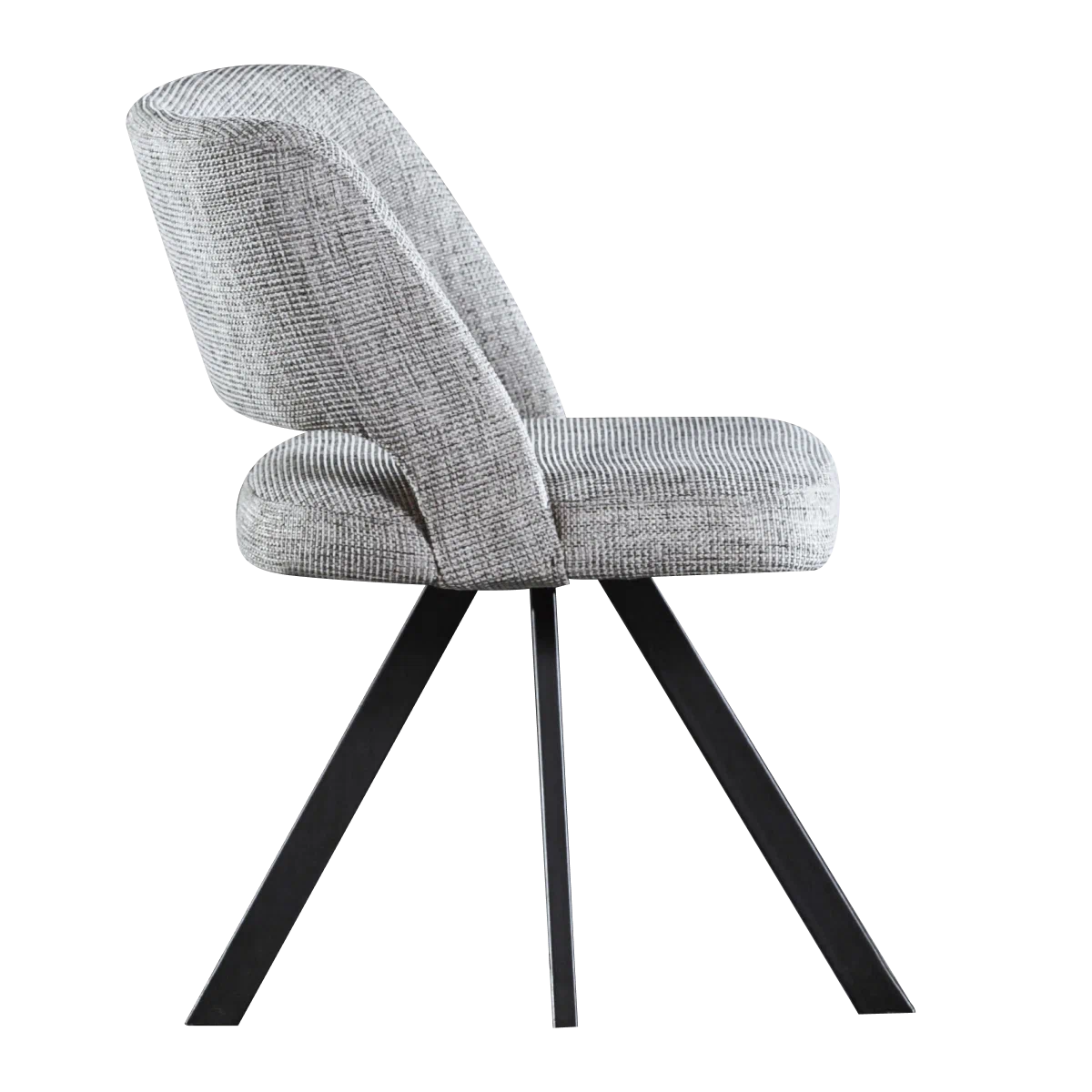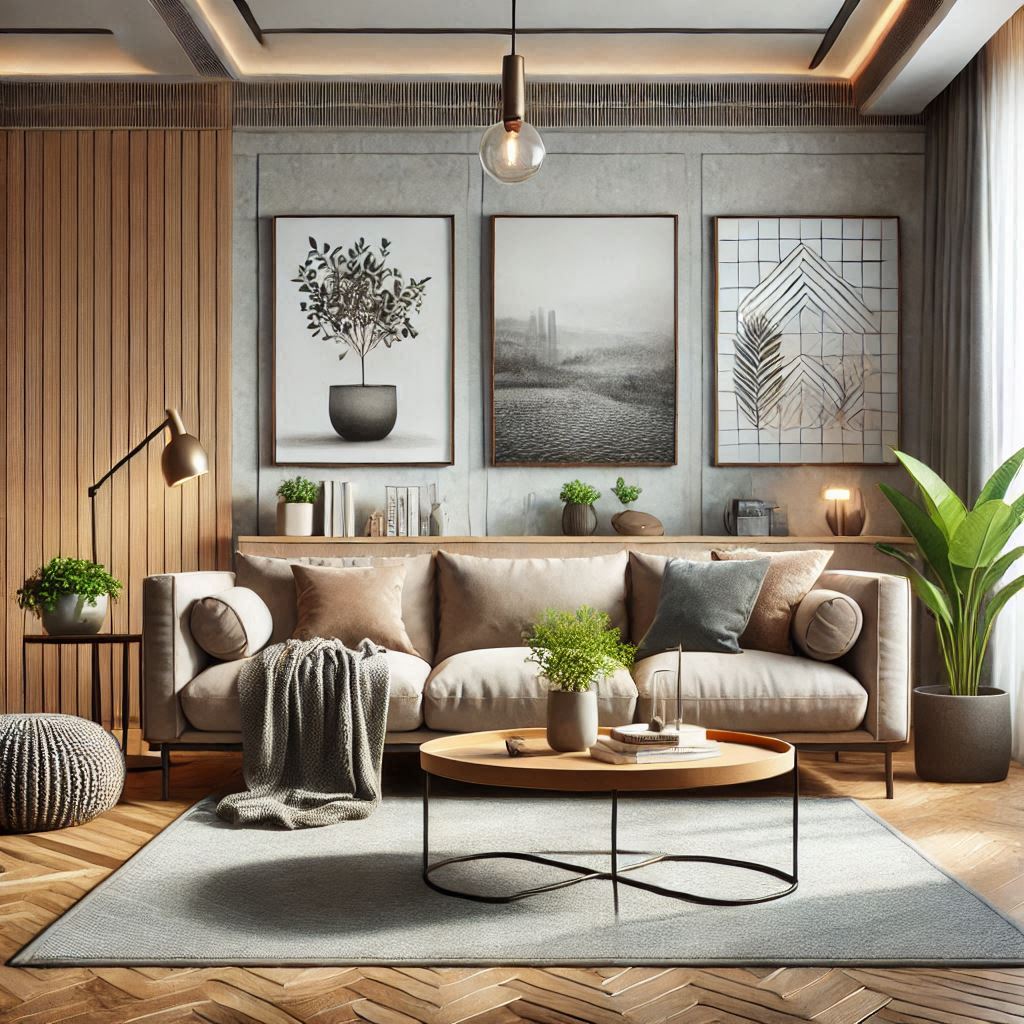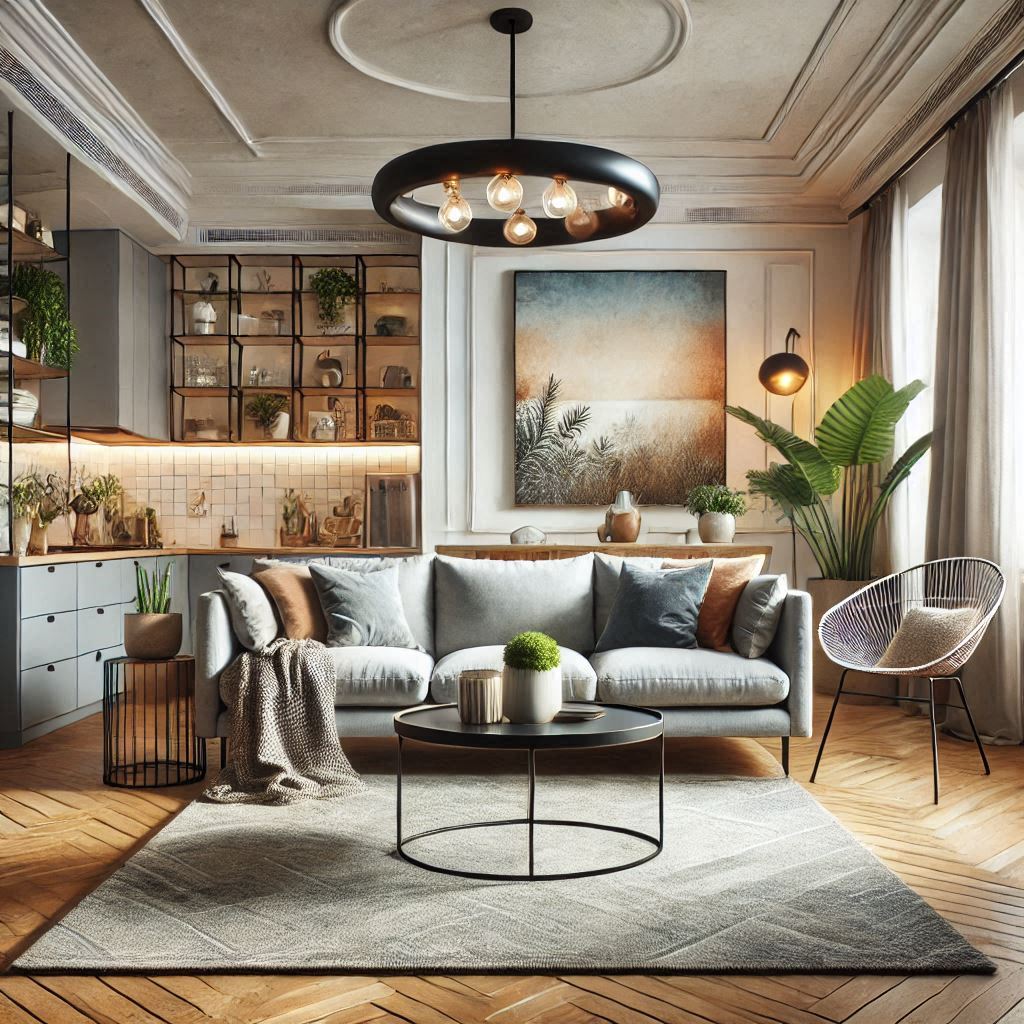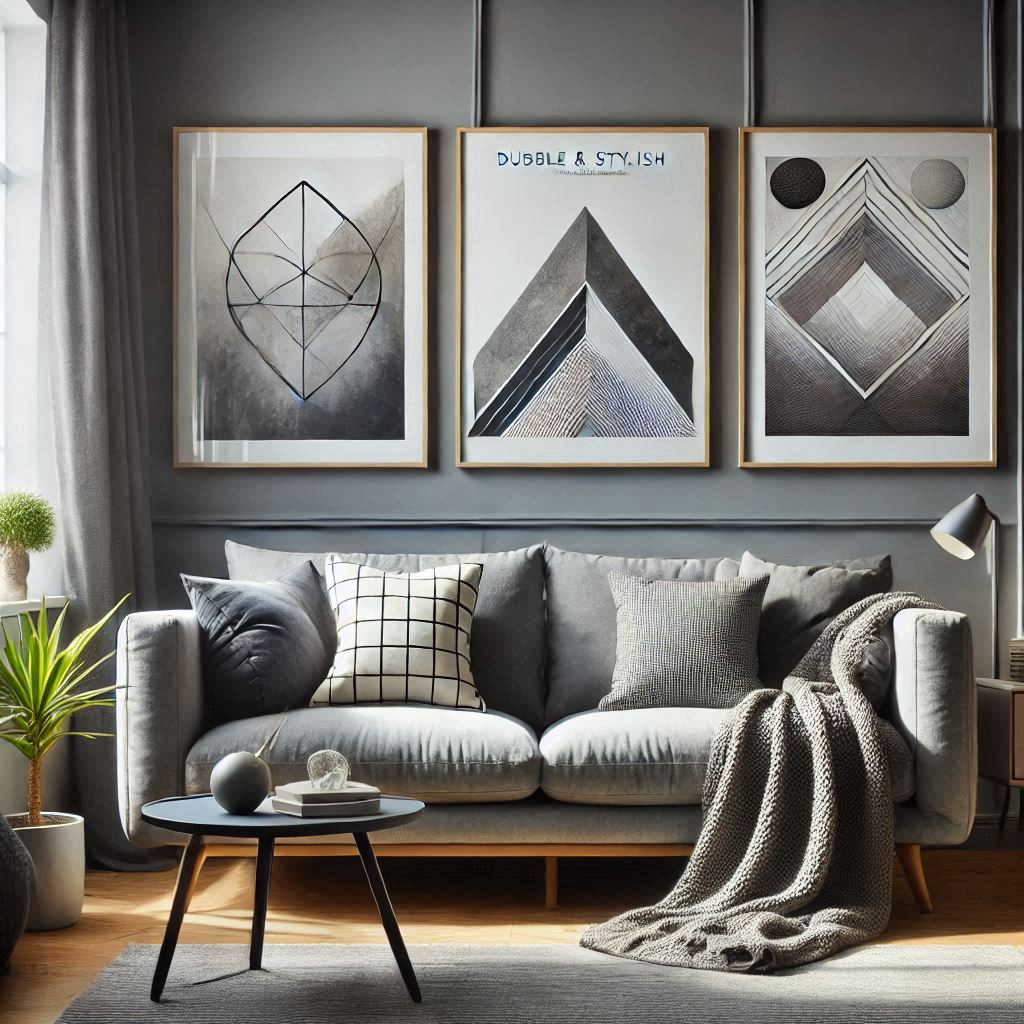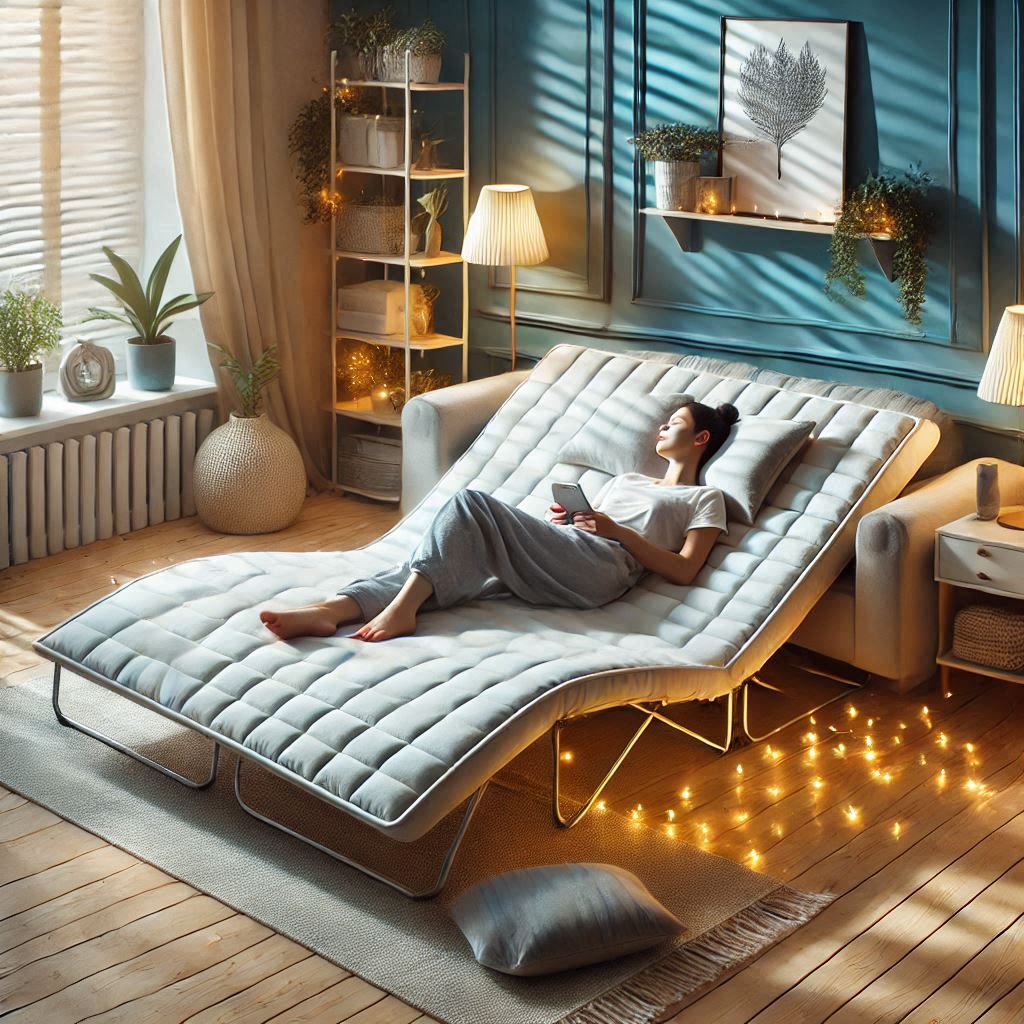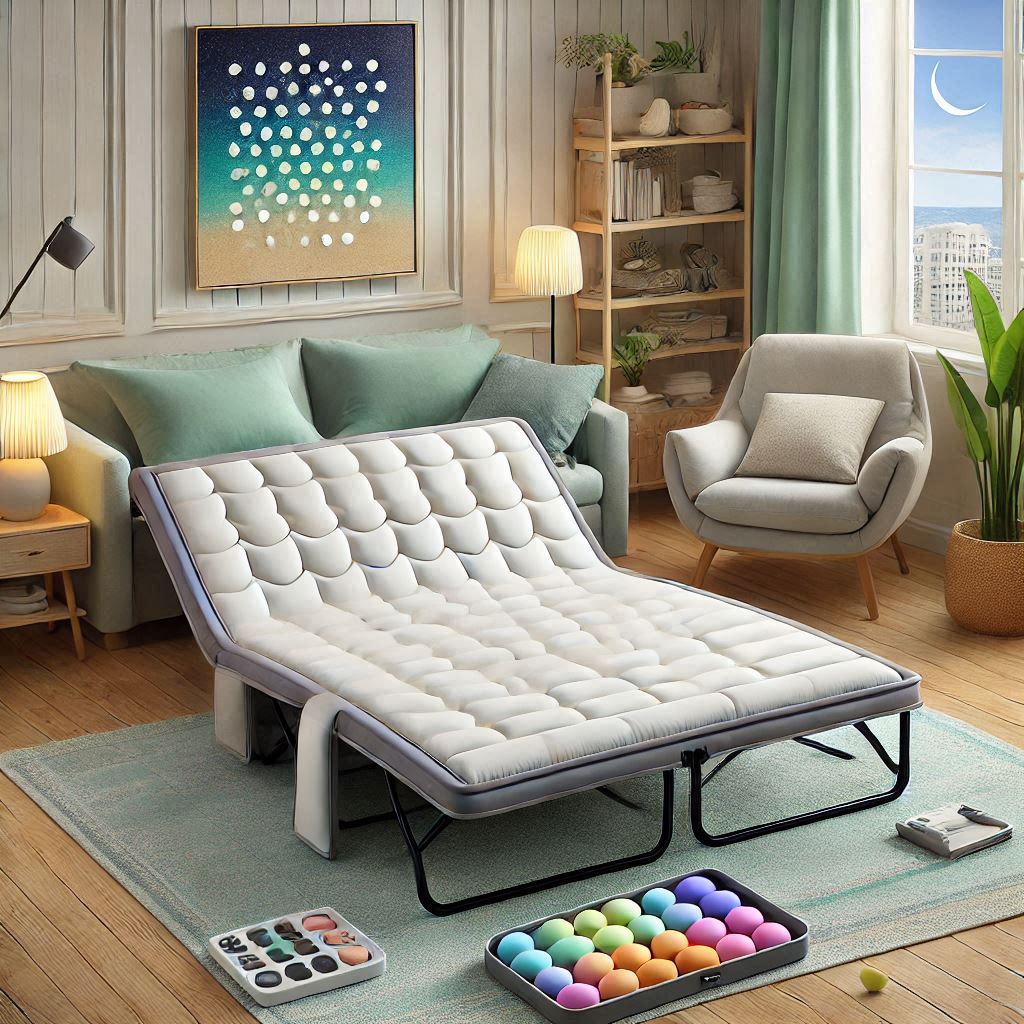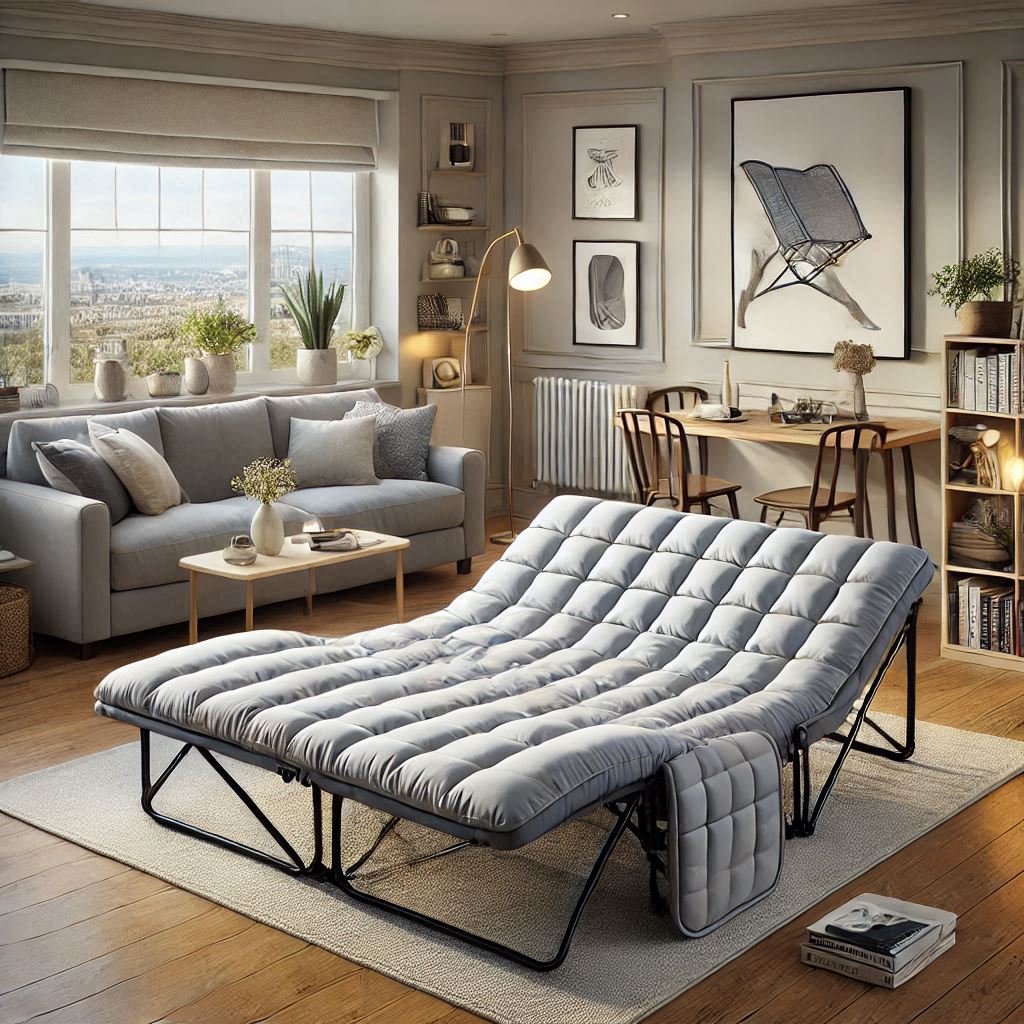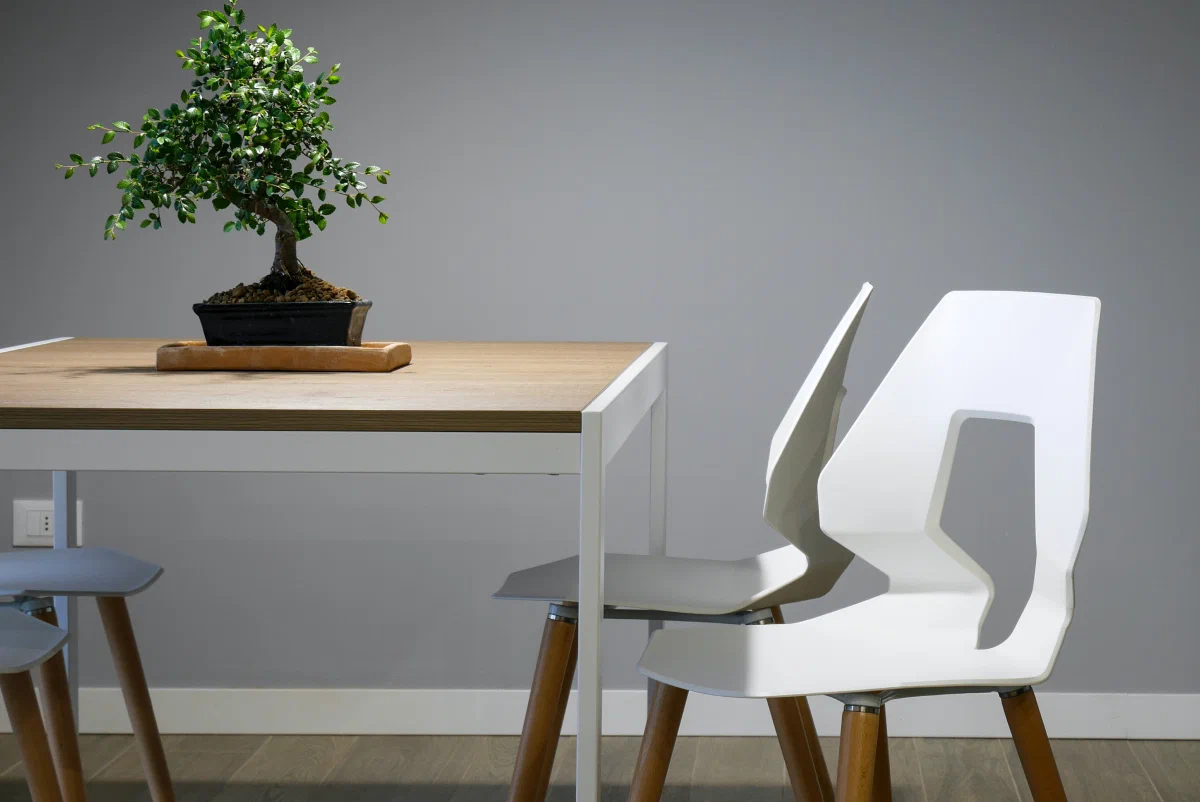Choosing the right sofa for a small space is a crucial decision that impacts both functionality and aesthetics. By carefully considering factors such as size, style, comfort, and functionality, you can find a sofa that maximizes your space and enhances your lifestyle. Whether you opt for a compact loveseat, a versatile sofa bed, or a stylish sectional, the right sofa can transform your small living room into a comfortable and inviting haven.

Best Sofa Beds for Small Spaces: The Ultimate Guide (2024)
December 23, 2024
Sofa Bed vs. Futon: Which is Better for Small Apartments?
December 28, 2024
Best Sofa Beds for Small Spaces: The Ultimate Guide (2024)
December 23, 2024
Sofa Bed vs. Futon: Which is Better for Small Apartments?
December 28, 2024
Best Small Living Room Sofa: Top Picks & Buying Guide
What's the Best Sofa for a Small Living Room? (Loveseats, Sectionals & More)
Which sofa is best for a small living room?
For small living rooms, compact loveseats with a minimalist design are generally the best sofa option. These sofas typically seat two people and have a streamlined profile, making them ideal for maximizing space without sacrificing seating .
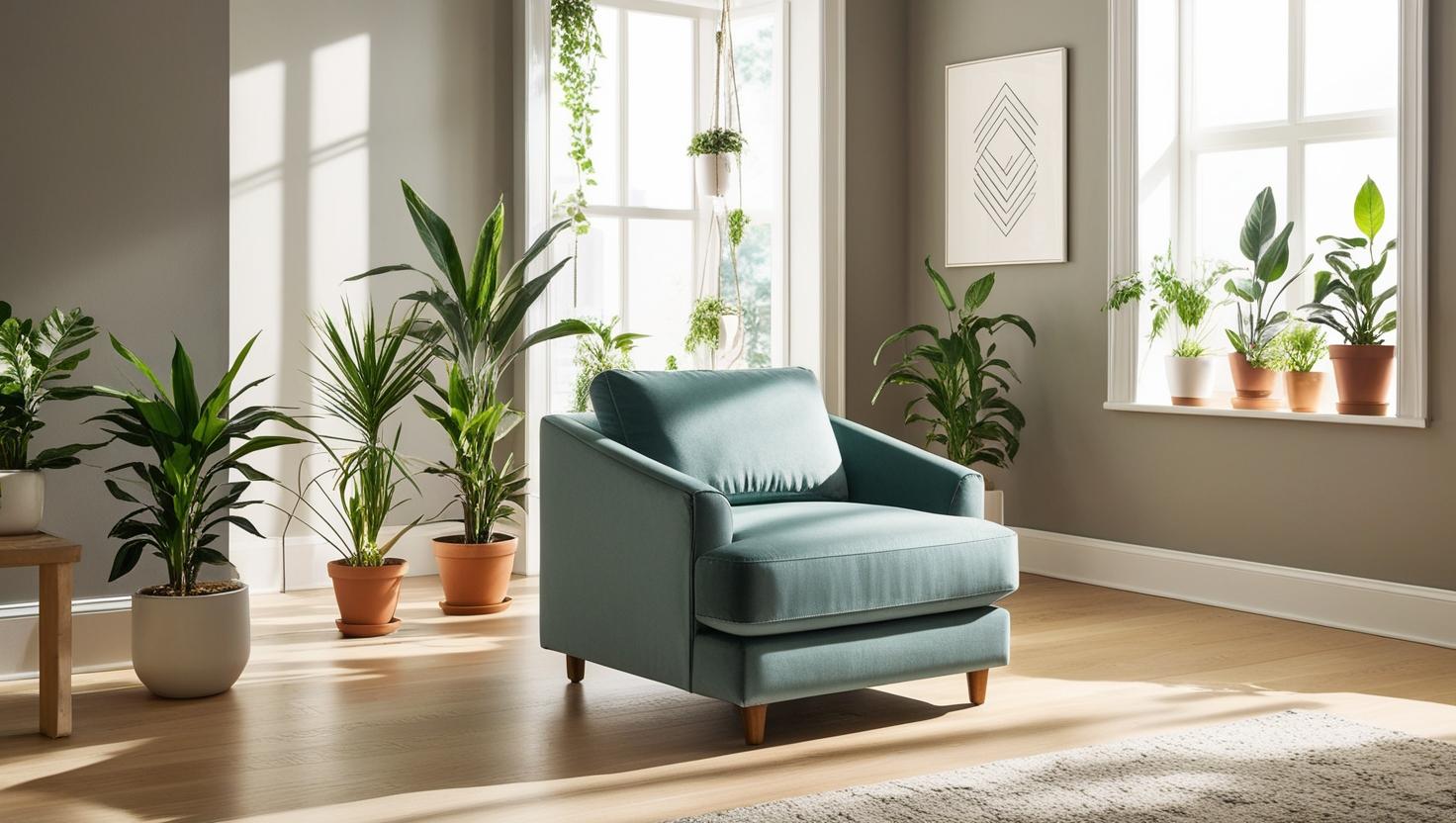
For small living rooms, compact loveseats—small sofas designed for two people—with a minimalist design are generally the best sofa option. As interior design expert Frida Ramstedt notes in her book 'The Interior Design Handbook,' choosing furniture that is proportionate to the size of the room is crucial for creating a balanced and functional space . These sofas typically seat two people and have a streamlined profile, making them ideal for maximizing space (often saving 6-12 inches of floor space compared to a standard sofa) without sacrificing seating
Here's why loveseats are a great choice for small living rooms:
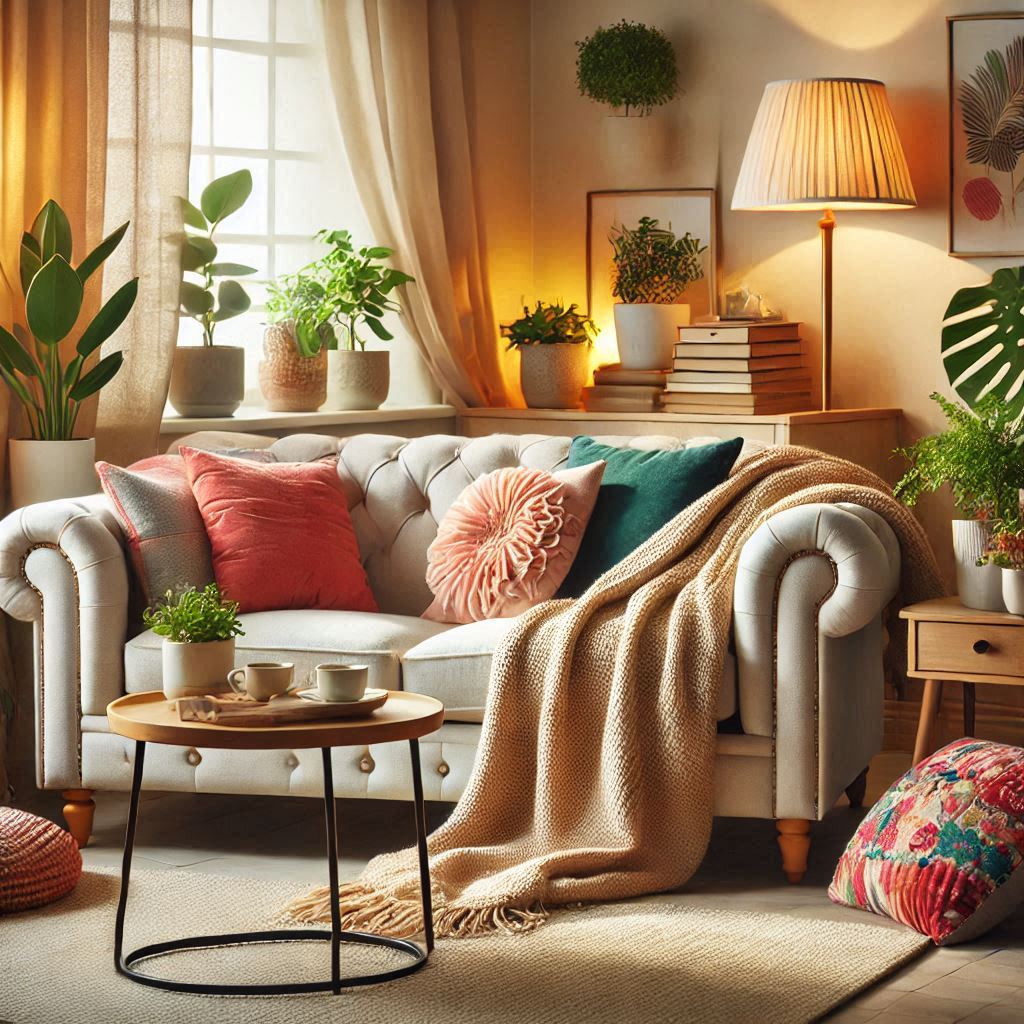
- Space-saving: Their smaller footprint allows for better traffic flow and creates a more open feel in a compact space.
- Versatile: Loveseats can be placed against a wall, in a corner, or even used to create a separate seating area in a larger room.
- Stylish: Loveseats come in a variety of styles, from modern and minimalist to traditional and classic, so you can find one that complements your décor.
While leather loveseats are a popular choice for their durability, consider other options like microfiber or performance fabrics, which offer stain resistance and easy cleaning, especially if you have pets or children.
Choosing a Sofa for a Small Living Room: Key Considerations
Beyond just the type of sofa, here are some key factors to consider:
- Size and scale: Measure your living room carefully and consider the size of other furniture in the room. A low-profile sofa can make a small room feel more spacious.
- Style: Choose a sofa that complements your existing décor. A modern sofa with clean lines will look great in a contemporary space, while a more traditional sofa with rolled arms will be a better fit for a classic living room.
- Comfort: Don't sacrifice comfort for style. Make sure the sofa you choose is comfortable to sit on for long periods.
- Functionality: If you need a sofa that can also be used as a bed, consider a sleeper sofa.
Ultimate Guide to Small Living Room Sofas: Loveseats, Sectionals, & Sleepers
Small Space Loveseat: Finding the Perfect Fit
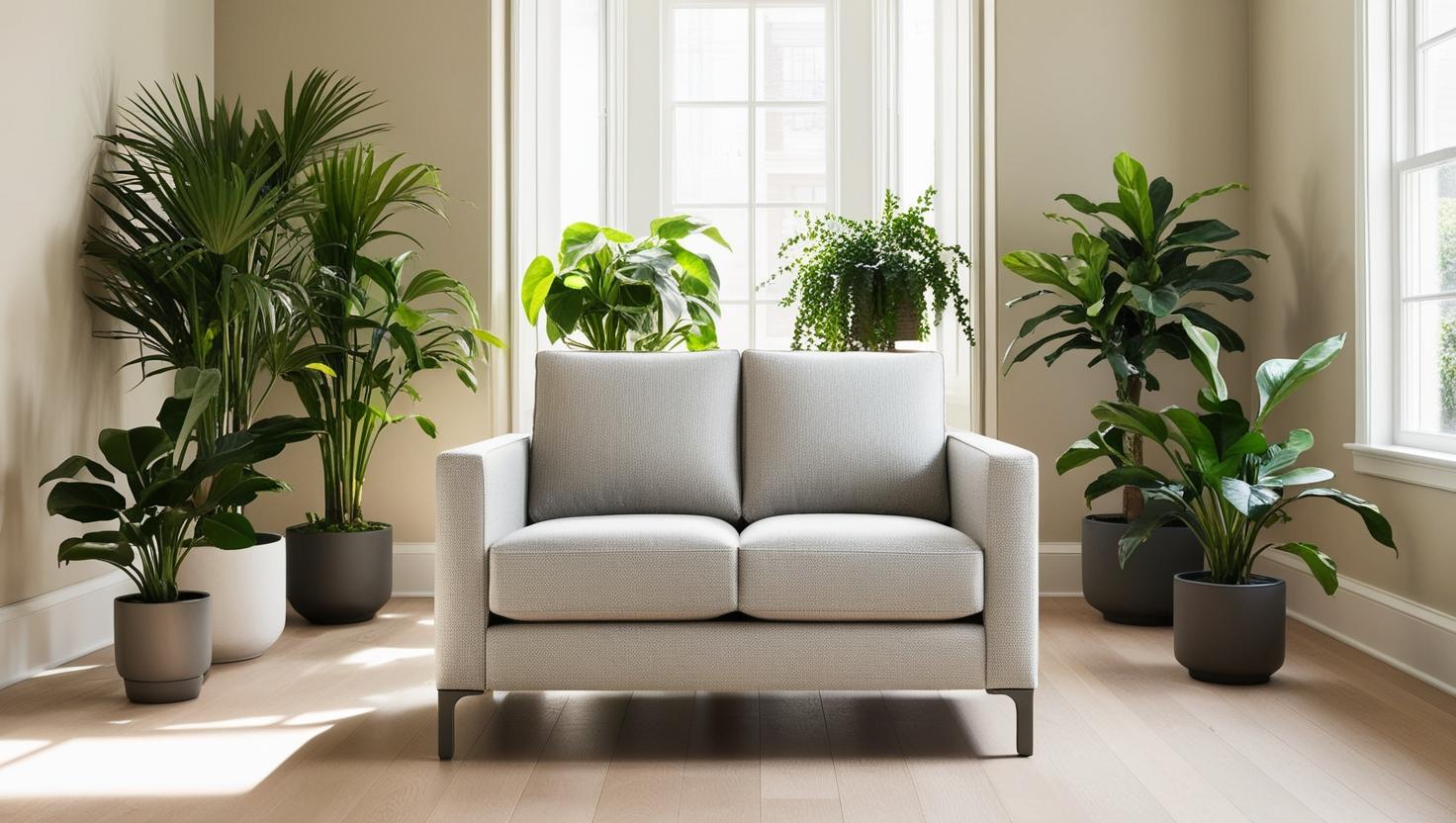
For small living rooms, compact loveseats with a minimalist design are generally the best sofa option. These sofas typically seat two people and have a streamlined profile, making them ideal for maximizing space (often saving 6-12 inches of floor space compared to a standard sofa) without sacrificing seating. This aligns with the advice of interior design expert Frida Ramstedt, who emphasizes the importance of choosing furniture that is proportionate to the size of the room in her book 'The Interior Design Handbook'.
Loveseats, with their cozy two-seater design, are a natural fit for small living rooms. But don't let their smaller size fool you – they can pack a big punch in terms of style and comfort. Here's what makes loveseats a smart choice for compact spaces:
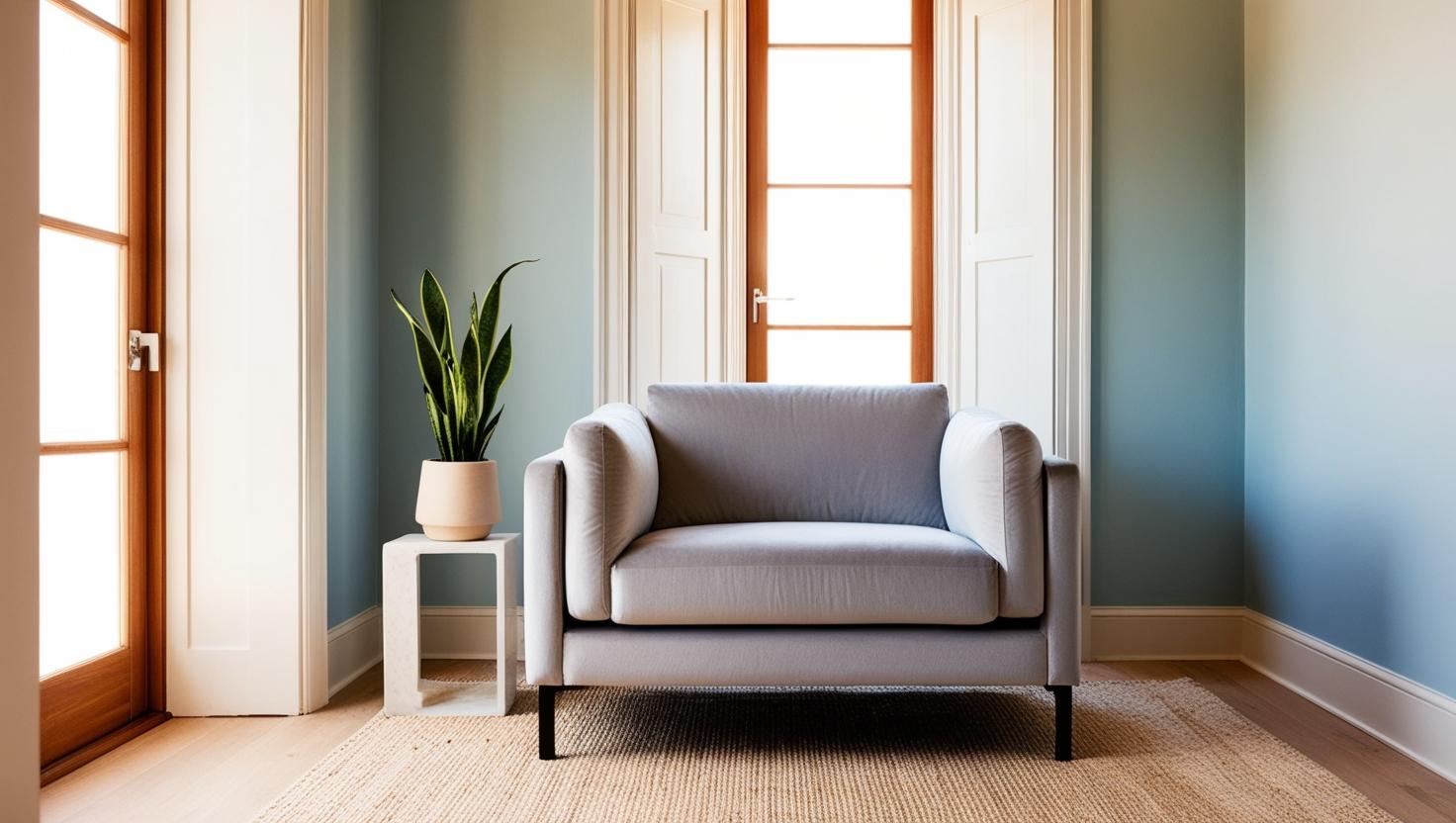
Drawbacks of Loveseats in Small Living Rooms
- Space-Saving: Their smaller footprint frees up valuable floor space, making the room feel more open.
- Versatile Placement: Loveseats can be easily moved and rearranged, allowing for flexible layouts.
- Affordable: Generally less expensive than larger sofas.
- Create Intimacy: Perfect for creating a cozy and intimate seating area.
Benefits of Loveseats in Small Living Rooms
- Limited Seating: Only comfortably seats two people.
- May Not Be Ideal for Lounging: Depending on the style, they might not be as comfortable for stretching out as a larger sofa.
Ideal Loveseat Dimensions for Small Living Rooms
- General Range: 50-70 inches wide, 35-40 inches deep.
- Small Space Tip: Look for loveseats under 60 inches wide for truly tight spaces.
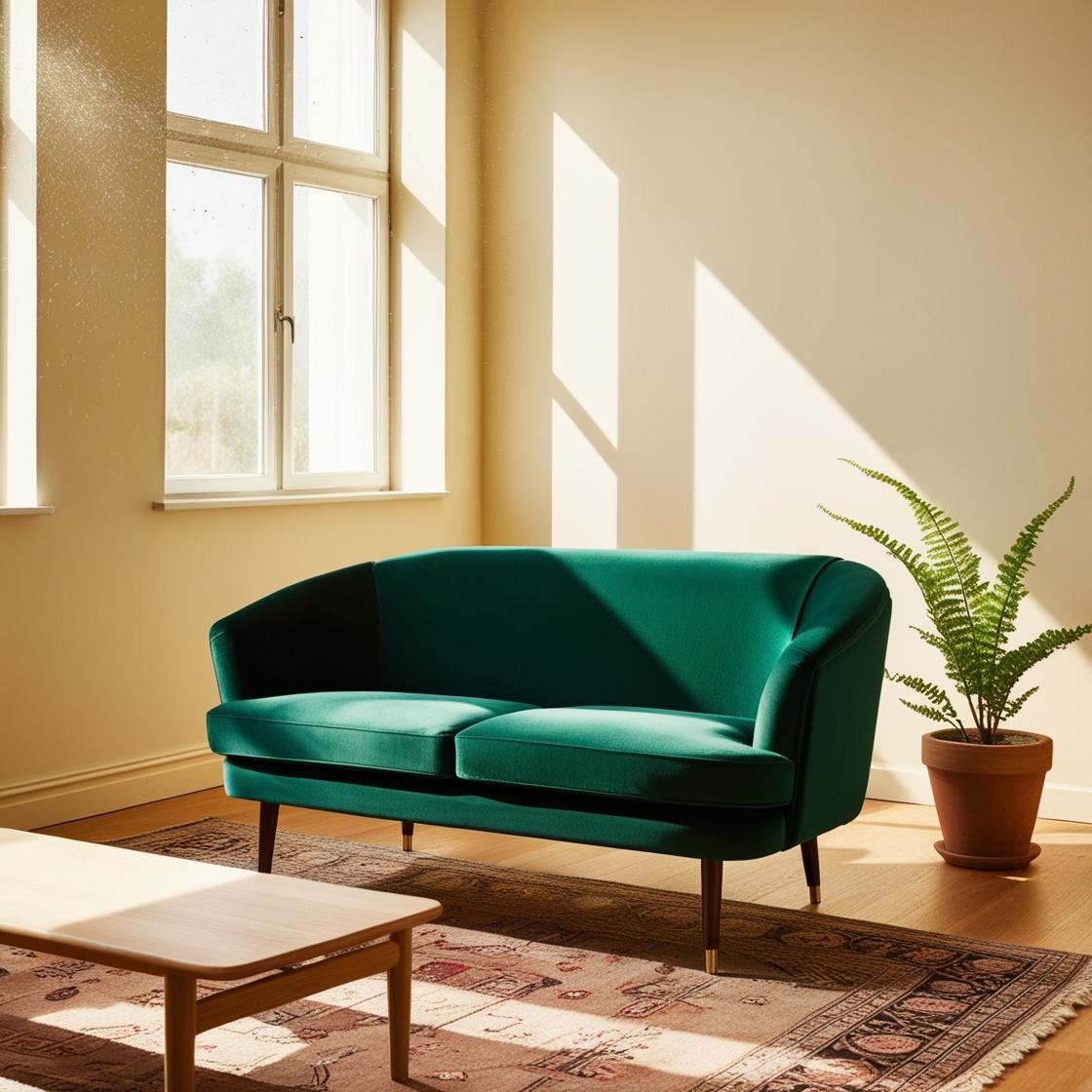
Popular Loveseat Styles for Compact Spaces
- Mid-Century Modern: Clean lines, tapered legs, and a minimalist aesthetic.
- Apartment-Size: Specifically designed for small spaces, often with slim arms and a compact footprint.
- Traditional with Rolled Arms: A classic look that adds a touch of elegance.
- Settee: A more formal, upright style that can work well in smaller, traditional living rooms.
Apartment-Sized Sofas: Perfect for Compact Living
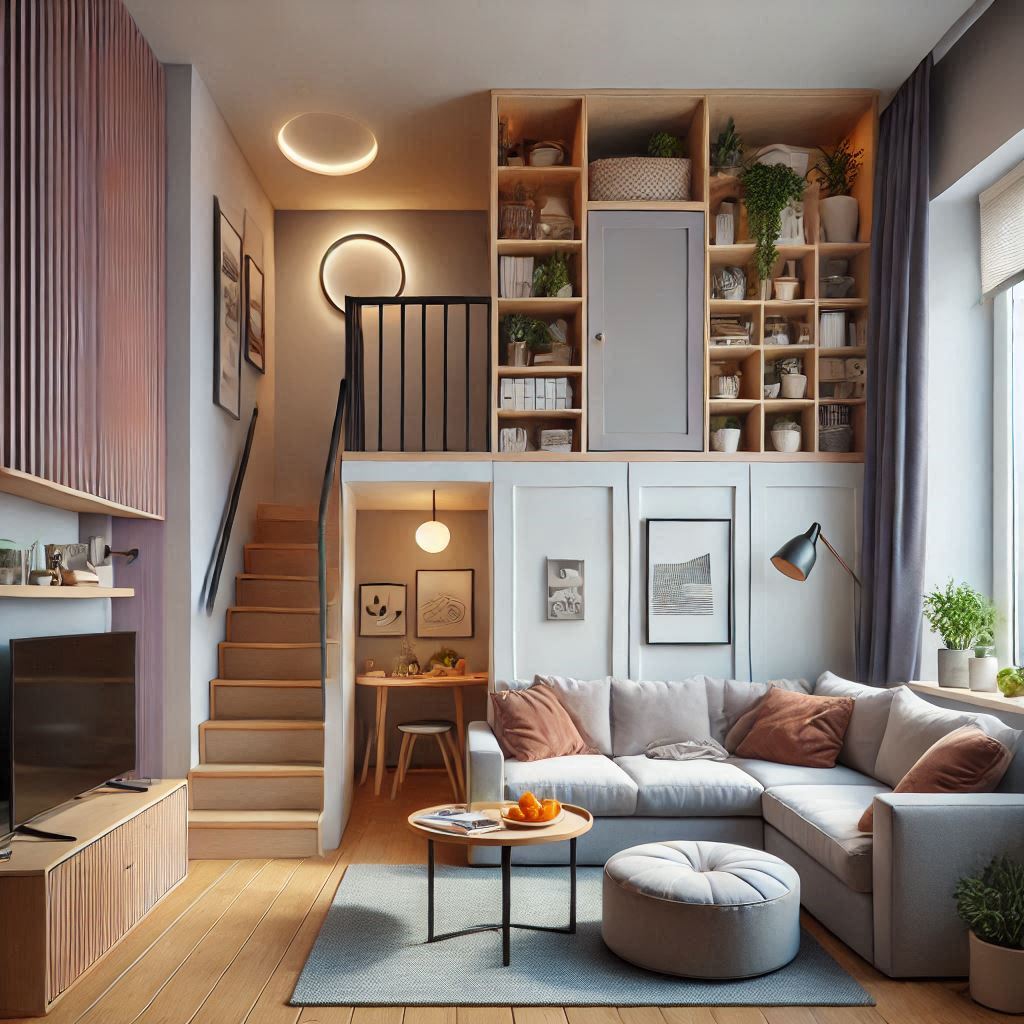
Many brands offer "apartment-size" sofas specifically designed for smaller spaces. These sofas are similar to standard sofas but with slightly smaller dimensions, typically around 72-84 inches in width.
Small Space Sectional Sofas: Finding the Perfect Fit
If you need extra sleeping space, convertible sofas are a fantastic option. These sofas transform into beds, providing a comfortable place for guests to stay overnight.
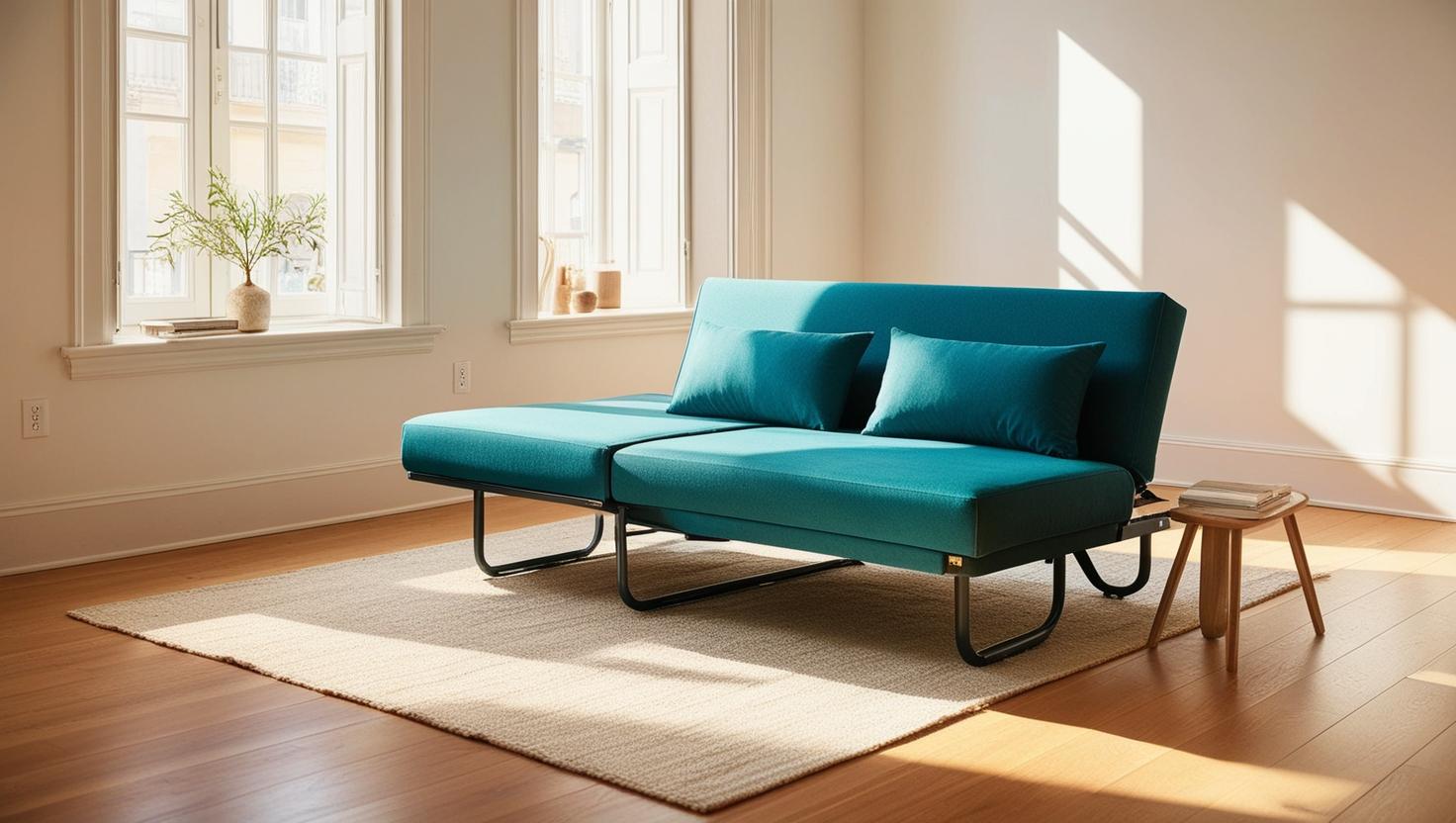
- Sleeper Sofas: These sofas have a hidden mattress and frame that folds out for sleeping.
- Sofa Beds: Similar to sleeper sofas, but the mattress may not be as thick or supportive.
- Futons: These versatile pieces can be used as both a sofa and a bed. They are typically more affordable than sleeper sofas.
Sectional sofas, once considered too large for small spaces, have evolved. Today's small-space sectionals offer clever designs that maximize both seating and style without overwhelming the room. The key is choosing the right configuration and features.
Benefits of Sectional Sofas in Small Living Rooms
- Maximized Seating: Offers more seating capacity than a loveseat, often accommodating three or more people.
- Defined Living Area: Helps create a clear and defined living space, especially in open-concept apartments.
- Comfortable Lounging: Many sectionals include a chaise portion, perfect for stretching out and relaxing.
- Customization: Modular sectionals allow you to customize the configuration to perfectly fit your space.
Drawbacks of Sectional Sofas in Small Living Rooms
- Can Still Be Bulky: Even smaller sectionals take up more space than a loveseat or two armchairs.
- Less Flexible Layout: Once placed, sectionals can be more difficult to rearrange than smaller, individual pieces.
- Price: Can be more expensive than loveseats or individual sofas.
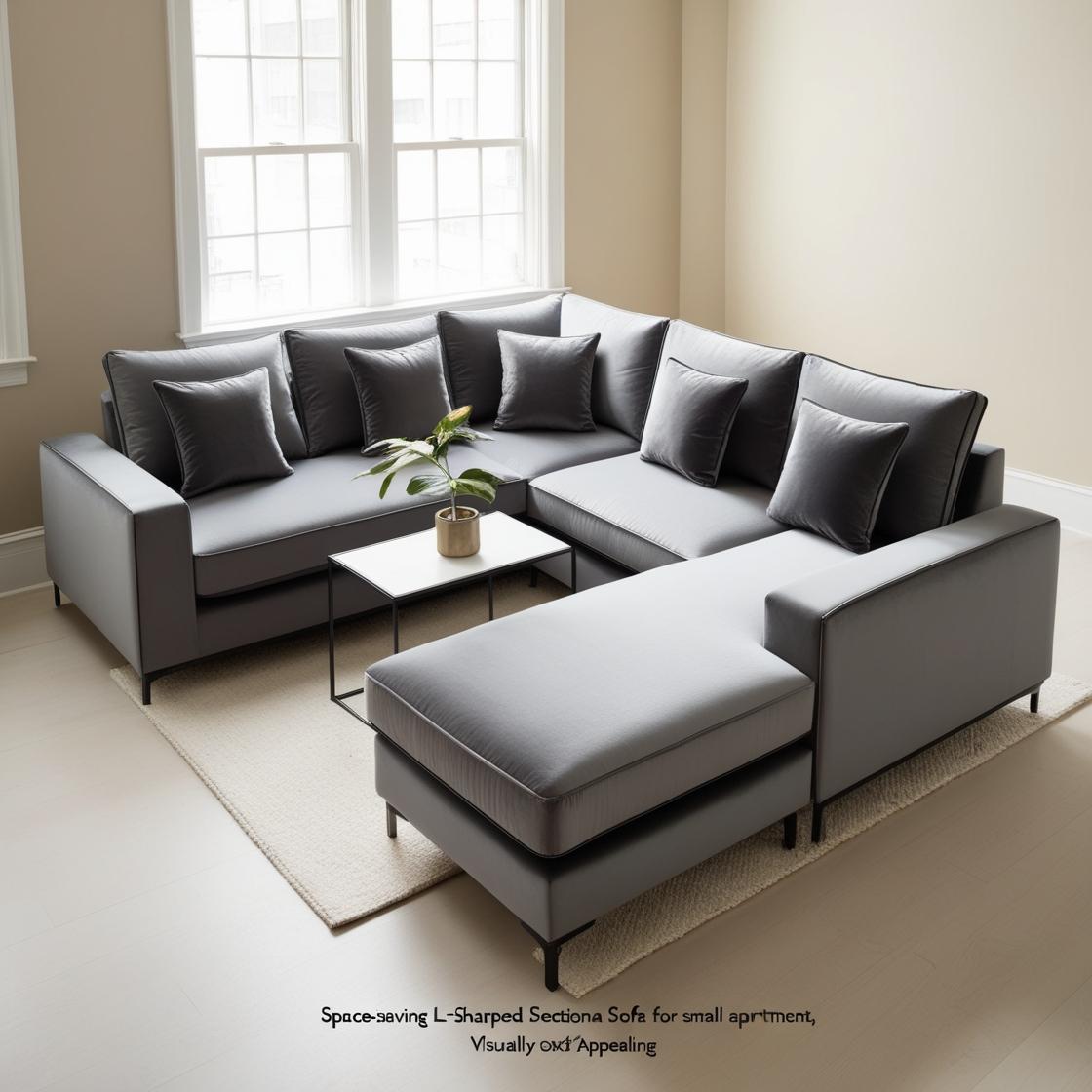
Ideal Sectional Sofa Dimensions for Small Spaces
- Small L-Shape: 75-90 inches wide (on the longest side) x 60-70 inches deep (chaise side).
- Small U-Shape: 90-100 inches wide x 60-70 inches deep (on each side).
- Modular Pieces: Individual pieces can range from 30-40 inches wide.
Sectional Sofa Styles for Small Spaces
- L-Shaped: The most common configuration for small spaces, offering a good balance of seating and space efficiency.
- U-Shaped: Provides more seating but requires more space. Best for slightly larger small living rooms.
- Modular: Individual pieces (armless chairs, corner units, ottomans) that can be combined to create a custom configuration.
- Reversible Chaise: Allows you to change the orientation of the chaise portion, offering greater flexibility.
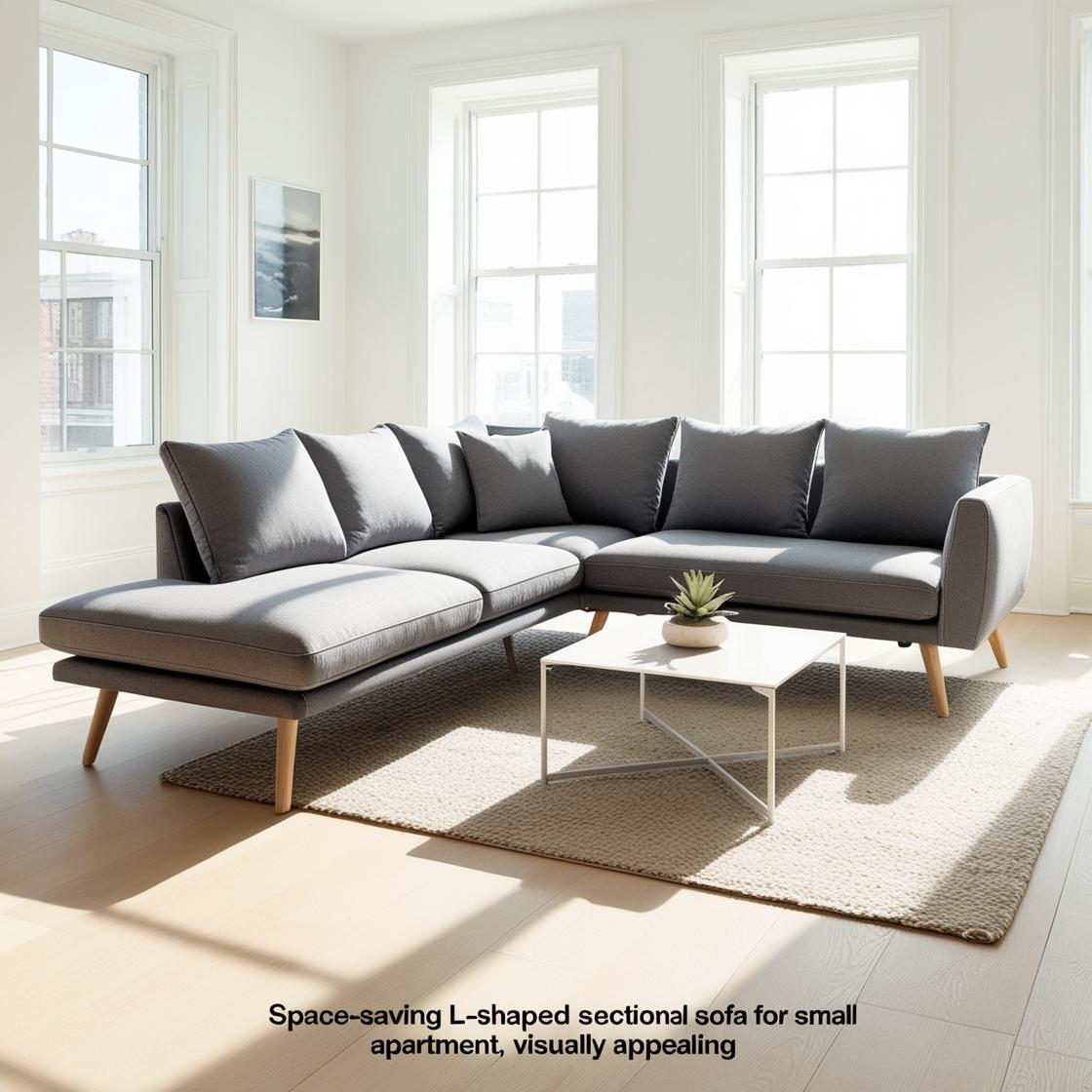
Sectional Sofa Buying Guide: A Checklist
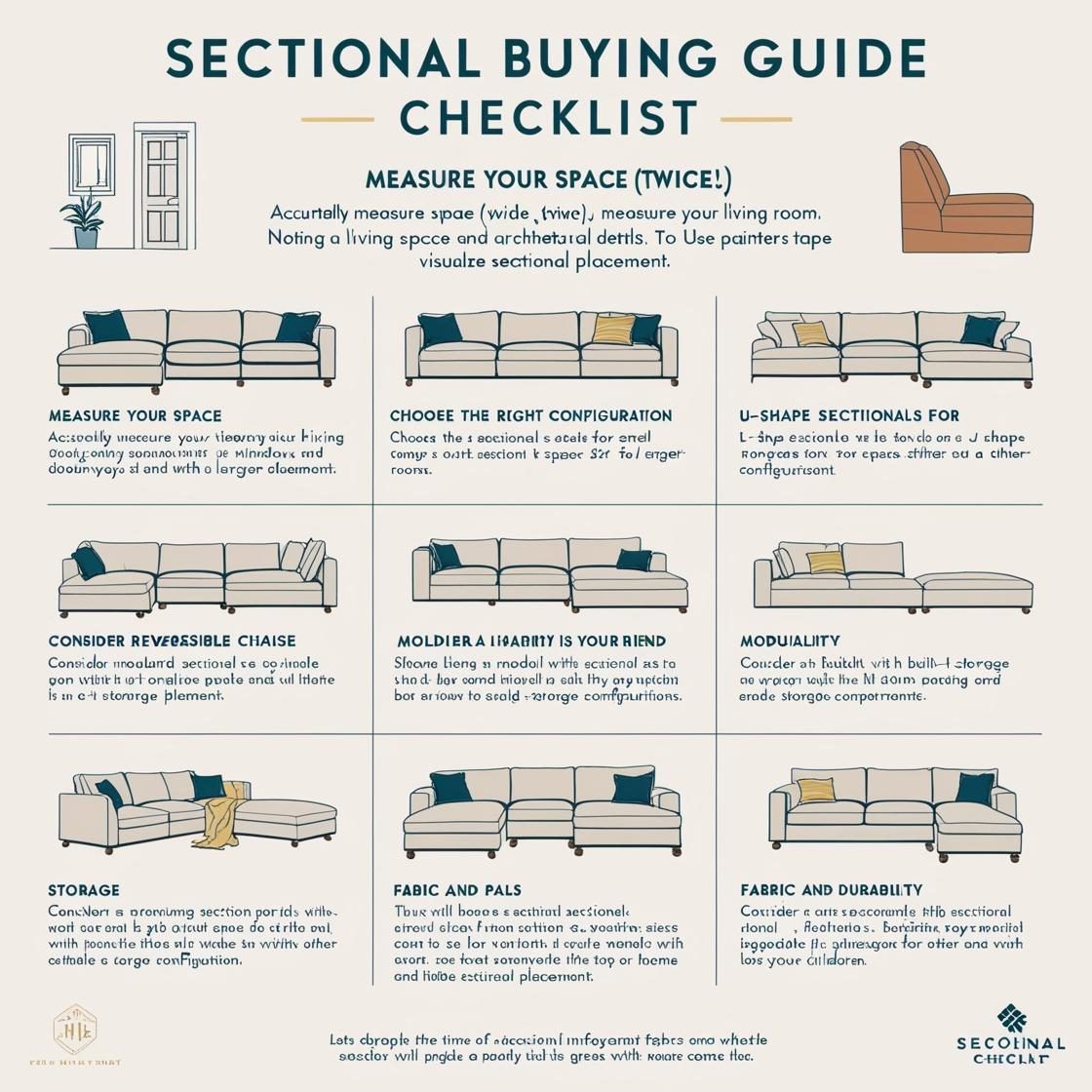
- Measure Your Space (Twice!): Accurately measure your living room, paying close attention to doorways, windows, and any architectural features. Consider using painter's tape to mark out the sectional's footprint on the floor.
- Choose the Right Configuration: L-shape is generally best for small spaces. U-shapes require more room.
- Consider a Reversible Chaise: This provides flexibility in arranging your furniture.
- Modularity is Your Friend: If you're unsure about the perfect configuration, opt for a modular sectional that allows for customization.
- Storage is a Plus: Look for sectionals with built-in storage under the seats or in the chaise.
- Fabric and Durability: Select a durable, easy-to-clean fabric, especially if you have pets or children.
Sectional Sofas: Customizable Comfort
While often associated with larger spaces, sectional sofas can be a great option for small living rooms if chosen carefully. Look for modular sectionals with customizable configurations to fit your specific space.
- L-Shaped Sectionals: These sectionals are ideal for maximizing corner space.
- Chaise Sectionals: These sectionals offer an extended section for lounging.
Choosing a Sectional Sofa for Small Spaces: Tips & Tricks
- Light and Bright: Choose light-colored upholstery to make the sectional feel less visually heavy.
- Exposed Legs: Elevated legs create a sense of spaciousness.
- Streamlined Design: Opt for a sectional with a clean, simple design. Avoid overly ornate or bulky styles.
- Pull it Away From the Wall: Even a few inches of space between the sectional and the wall can make the room feel larger.
- Use Mirrors Strategically: A well-placed mirror can reflect light and make the space appear bigger. Before you buy, ask yourself:
- Is there enough space in your living room to comfortably move around the sectional?
- Does the sectional configuration work with the flow of traffic in your space?
- Is the sectional comfortable for both sitting and lounging?
- Does the style and fabric of the sectional complement your existing decor?
Sleeper Sofas for Small Spaces: Ideal for Guests
Sleeper sofas are the ultimate space-saving solution for small living rooms, providing both seating and a comfortable place for guests to sleep. Modern sleeper sofas have come a long way, with improved mechanisms and more comfortable mattresses.
Benefits of Sleeper Sofas in Small Living Rooms
- Dual Functionality: Serves as both a sofa and a bed, maximizing space utilization.
- Guest Accommodations: Provides a convenient sleeping option for overnight guests.
- Ideal for Studio Apartments: Eliminates the need for a separate bedroom.
Drawbacks of Sleeper Sofas in Small Living Rooms
- Comfort Compromise: Even high-quality sleeper sofas may not be as comfortable as a dedicated bed or sofa.
- Heavier and Bulkier: The mechanism and mattress add weight and bulk compared to regular sofas.
- Price: Typically more expensive than regular sofas.
Ideal Sleeper Sofa Dimensions for Small Spaces
- Full-Size Sleeper: 70-80 inches wide (when closed).
- Queen-Size Sleeper: 80-90 inches wide (when closed).
- Depth: 35-40 inches deep (when closed).
Sleeper Sofa Styles and Features
- Pull-Out: The traditional sleeper sofa mechanism, where the mattress unfolds from within the sofa frame.
- Click-Clack (Futon Style): The backrest folds down to create a flat sleeping surface.
- Inflatable Mattress: Some modern sleeper sofas feature built-in inflatable mattresses for added comfort.
- Memory Foam Mattress: Offers better support and comfort than traditional innerspring mattresses.
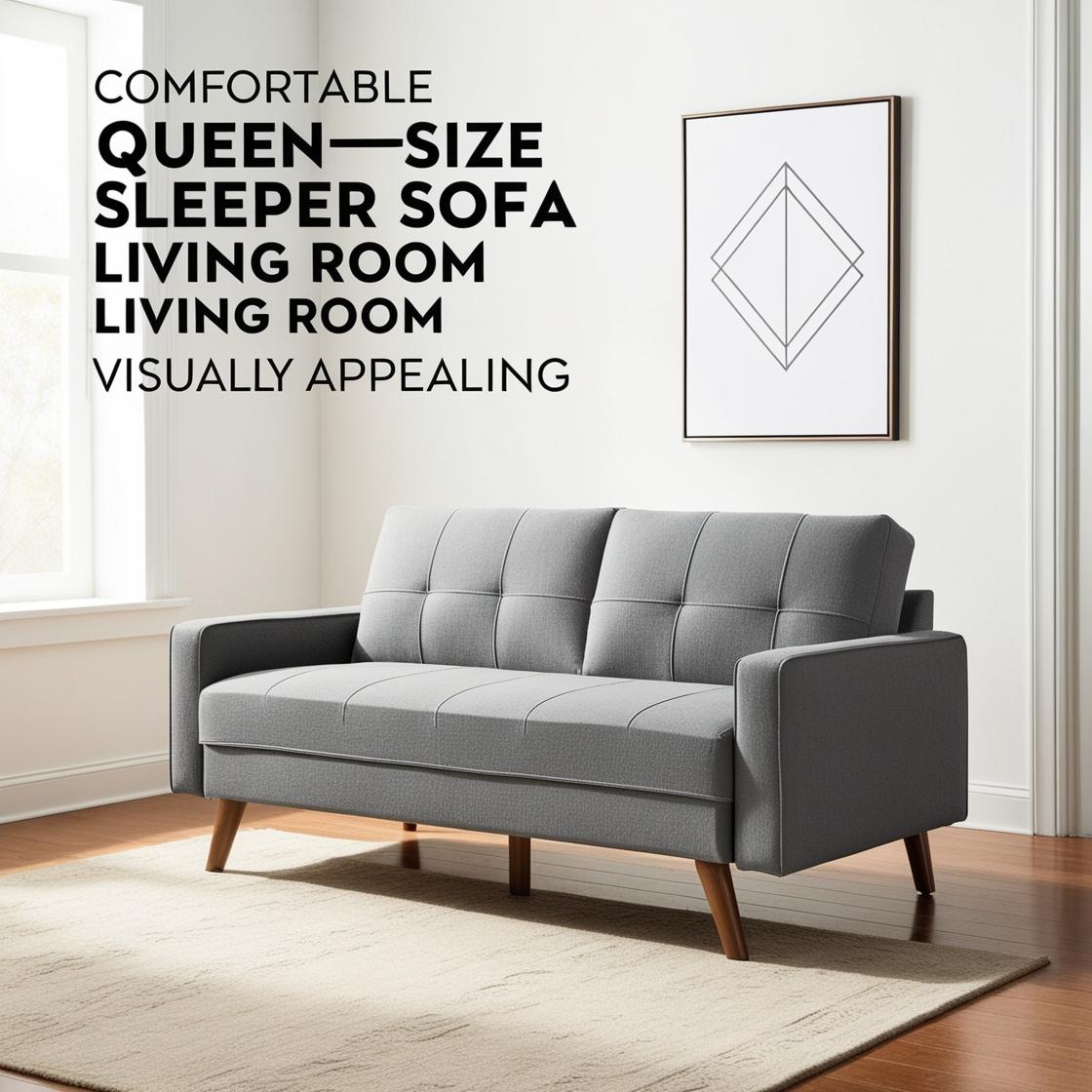
Sleeper Sofa Selection Checklist
- Measure Your Space (Open and Closed): Ensure you have enough room to fully extend the sleeper mechanism.
- Mattress Type: Consider the type of mattress (innerspring, memory foam, inflatable) and its thickness. Memory foam is generally considered the most comfortable.
- Ease of Conversion: Test the mechanism to make sure it's easy to open and close.
- Comfort as a Sofa: Don't forget to sit on the sofa to assess its comfort level when used for seating.
- Frame Construction: Look for a sturdy frame made of hardwood or metal.
- Fabric: Choose a durable, stain-resistant fabric, especially if it will be used frequently.
Choosing a Sleeper Sofa for Small Spaces: Tips & Tricks
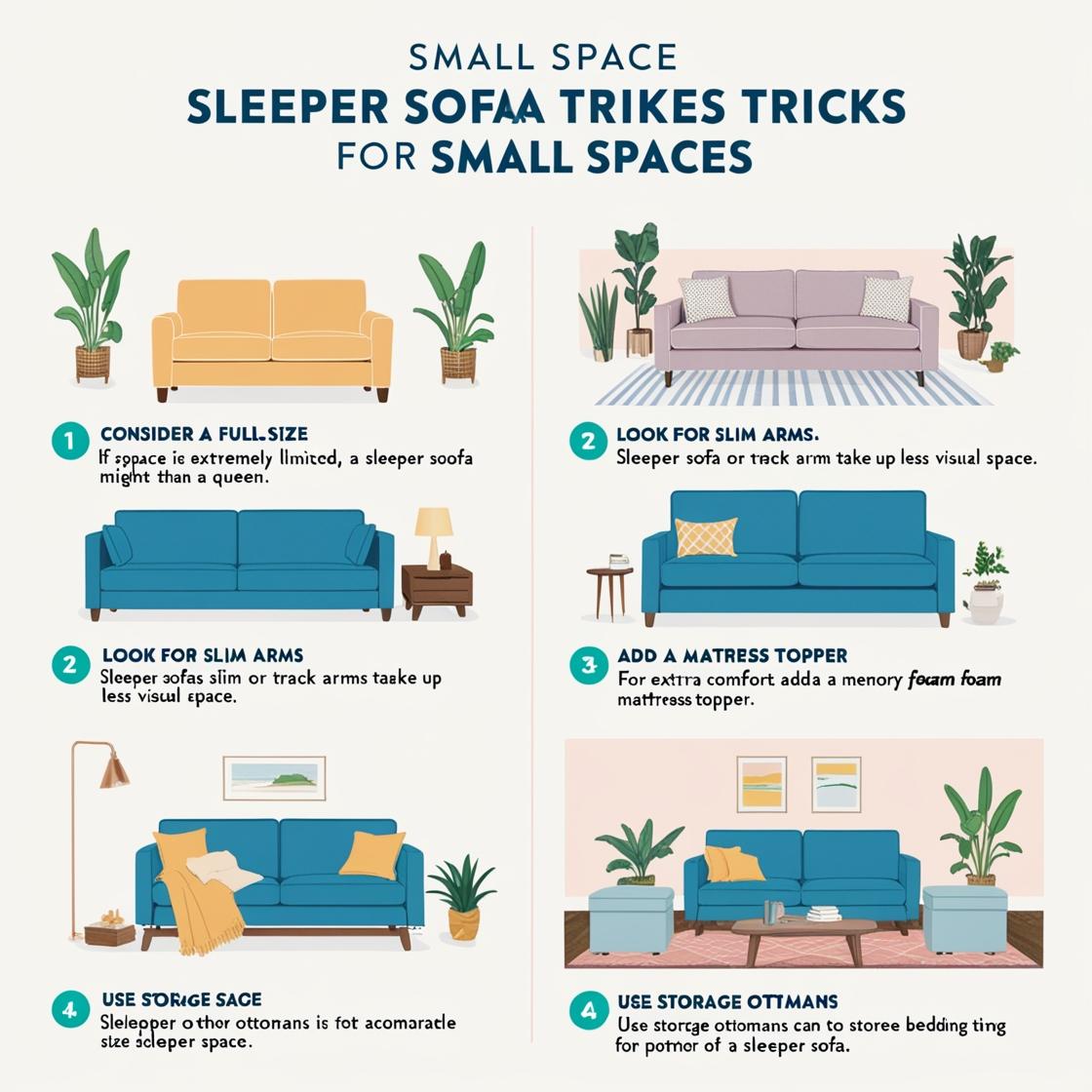
- Consider a Full-Size: If space is extremely limited, a full-size sleeper sofa might be a better option than a queen.
- Look for Slim Arms: Sleeper sofas with slim or track arms take up less visual space.
- Add a Mattress Topper: For extra comfort, consider adding a memory foam mattress topper.
- Storage Ottomans: Use storage ottomans to store bedding for the sleeper sofa.
Buying a Sleeper Sofa: Key Questions to Ask
- How often will the sleeper sofa be used as a bed?
- What is your budget for a sleeper sofa?
- Is the sleeper mechanism easy to operate?
- Is the mattress comfortable enough for your guests?
- Does the sleeper sofa style complement your existing decor?
Modular Sofas & Sofa Chaises: Versatile Seating
Modular Sofas: Flexible Seating Solutions
Modular sofas offer unparalleled flexibility for small spaces. These sofas are made up of individual pieces (modules) that can be arranged and rearranged to create a variety of configurations.
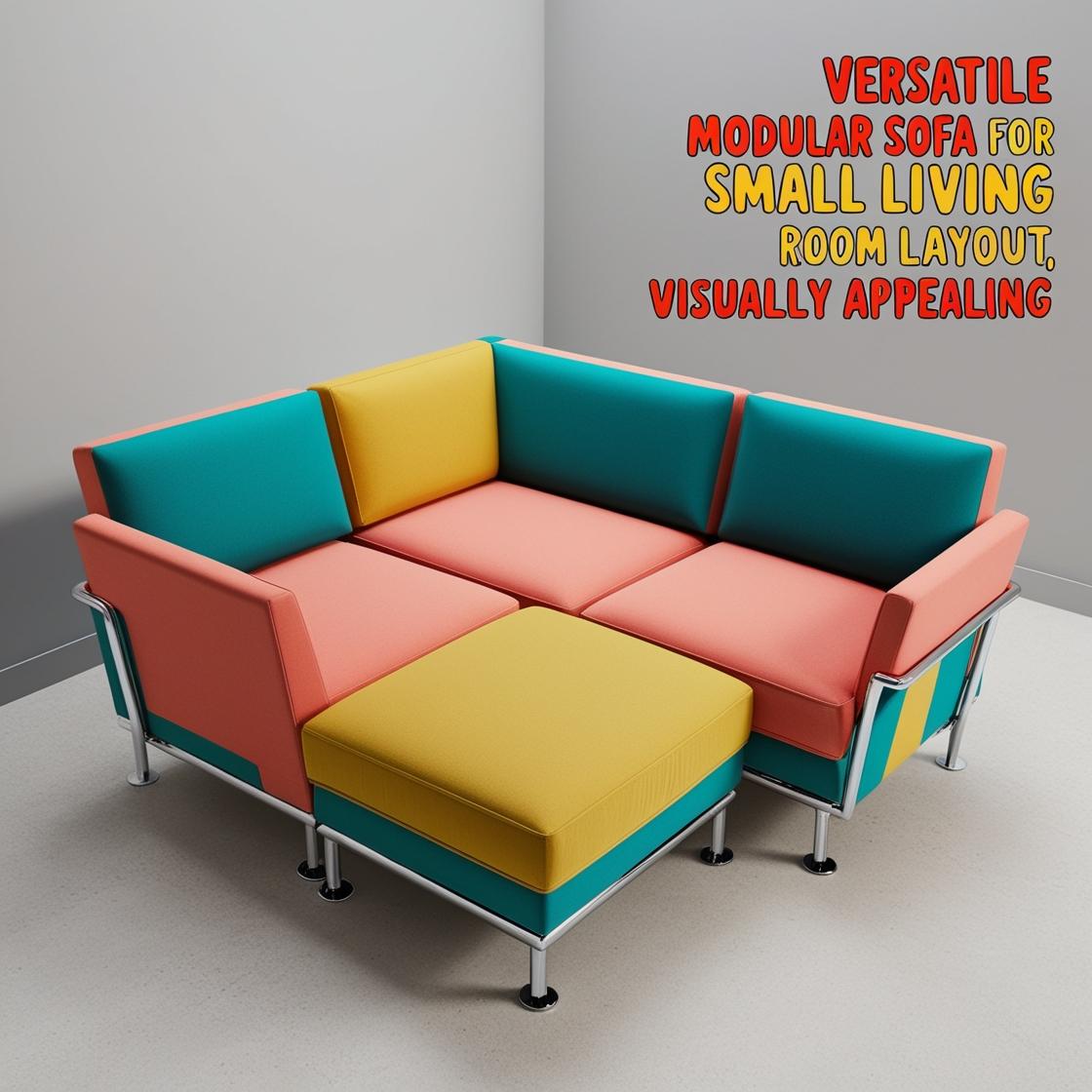
Benefits of Modular Sofas
- Highly Customizable: Create a sofa that perfectly fits your space and needs.
- Adaptable: Rearrange the modules to change the look and functionality of your living room.
- Easy to Move: Individual modules are easier to move than a large, one-piece sofa.
Drawbacks of Modular Sofas
- Can Be Expensive: Depending on the brand and the number of modules.
- Requires Planning: You need to carefully plan the configuration to ensure it works in your space.
Choosing a Modular Sofa for Small Spaces: Tips & Tricks
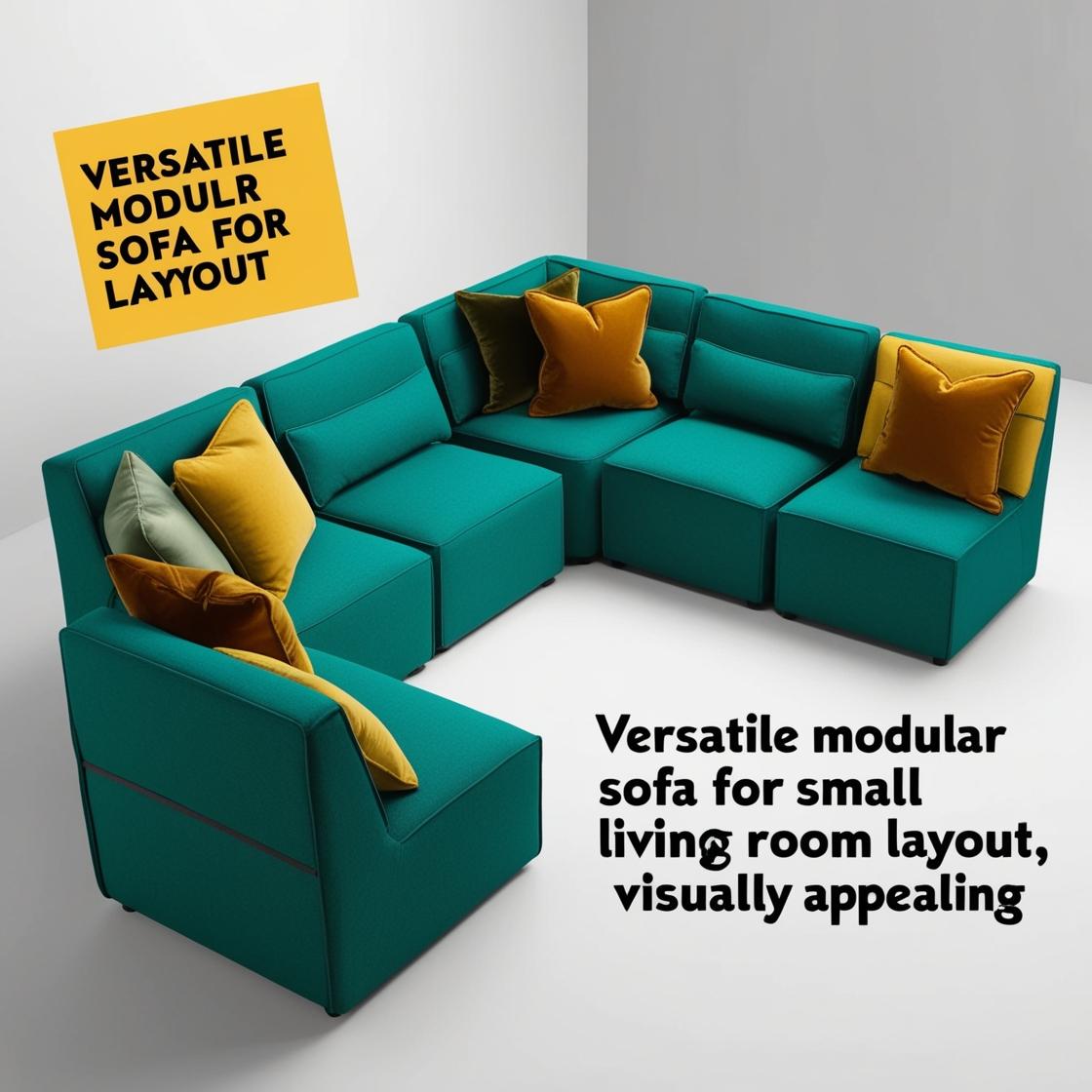
- Start Small: Begin with a few essential modules (corner unit, armless chair) and add more as needed.
- Consider Storage: Some modules come with built-in storage.
- Look for Durable Connectors: Ensure the modules connect securely.
Sofa Chaises: Stylish and Functional Seating
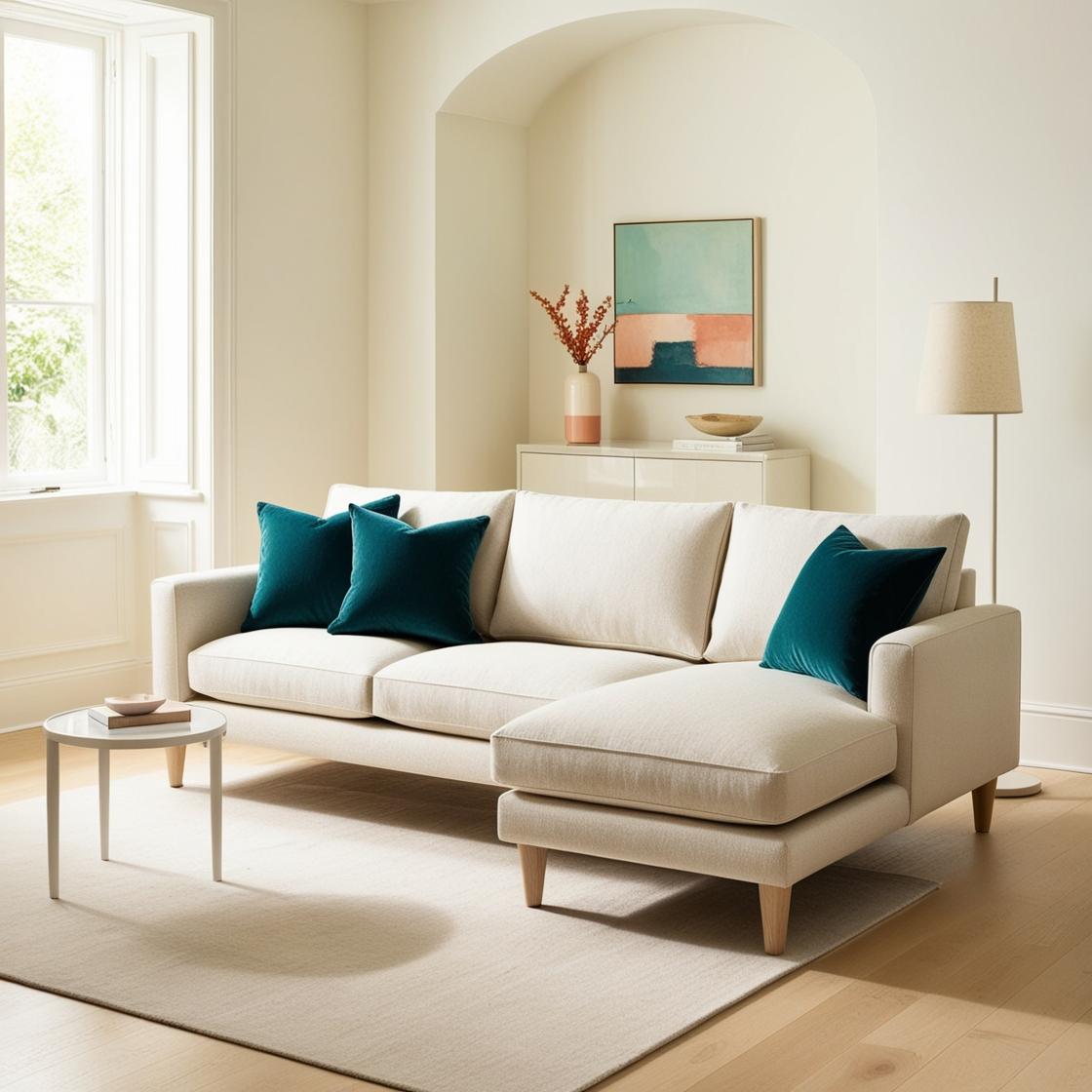
A sofa chaise is essentially a sofa with an extended seat on one end, creating a built-in chaise lounge. It's a great option for adding a touch of luxury and relaxation to a small living room.
Benefits of Sofa Chaises
- Comfortable Lounging: Provides a comfortable spot to stretch out and relax.
- Space-Saving (Sometimes): Can be more space-efficient than a separate sofa and ottoman.
- Stylish: Adds a touch of elegance and sophistication.
Drawbacks of Sofa Chaises
- Less Seating: The chaise portion typically only accommodates one person comfortably.
- Can Be Bulky: Depending on the size and style.
Choosing a Sofa Chaise for Small Spaces: Tips & Tricks
- Consider the Orientation: Choose a left-facing or right-facing chaise based on your room layout.
- Look for a Reversible Chaise: Some models allow you to switch the chaise from one side to the other.
- Think About Proportions: Make sure the chaise is proportionate to the overall size of the sofa and the room.
Choosing the Right Sofa Size for Small Living Rooms
Choosing the right sofa size for a small living room is crucial to maximize space and comfort. It's essential to consider the room's dimensions and your seating needs. Generally, smaller sofas, such as loveseats and apartment-size sofas, are ideal for small living rooms. Loveseats typically range from 52 to 64 inches wide, while apartment-size sofas are slightly larger, usually around 72 to 84 inches wide. However, there are even smaller options available, such as compact loveseats or sofas with a reduced depth.

For example, if you have a small apartment with limited space, a loveseat with a seating width of 120cm to 150cm might be sufficient for two adults. If you have children or frequently host guests, a slightly larger sofa with a seating width of 150cm to 180cm might be more suitable.
When determining the ideal sofa size, measure the available space and consider the sofa's dimensions in both its standard and bed positions (if it's a sofa bed). Ensure there's enough clearance for easy movement and traffic flow. A good rule of thumb is to aim for a sofa that's about two-thirds the length of the wall it will be placed against.
The Ultimate Guide to Choosing a Sofa for a Small Apartment
When choosing a sofa for a small apartment, prioritize compact size, functionality, and style. Here's a breakdown of the key factors to consider:
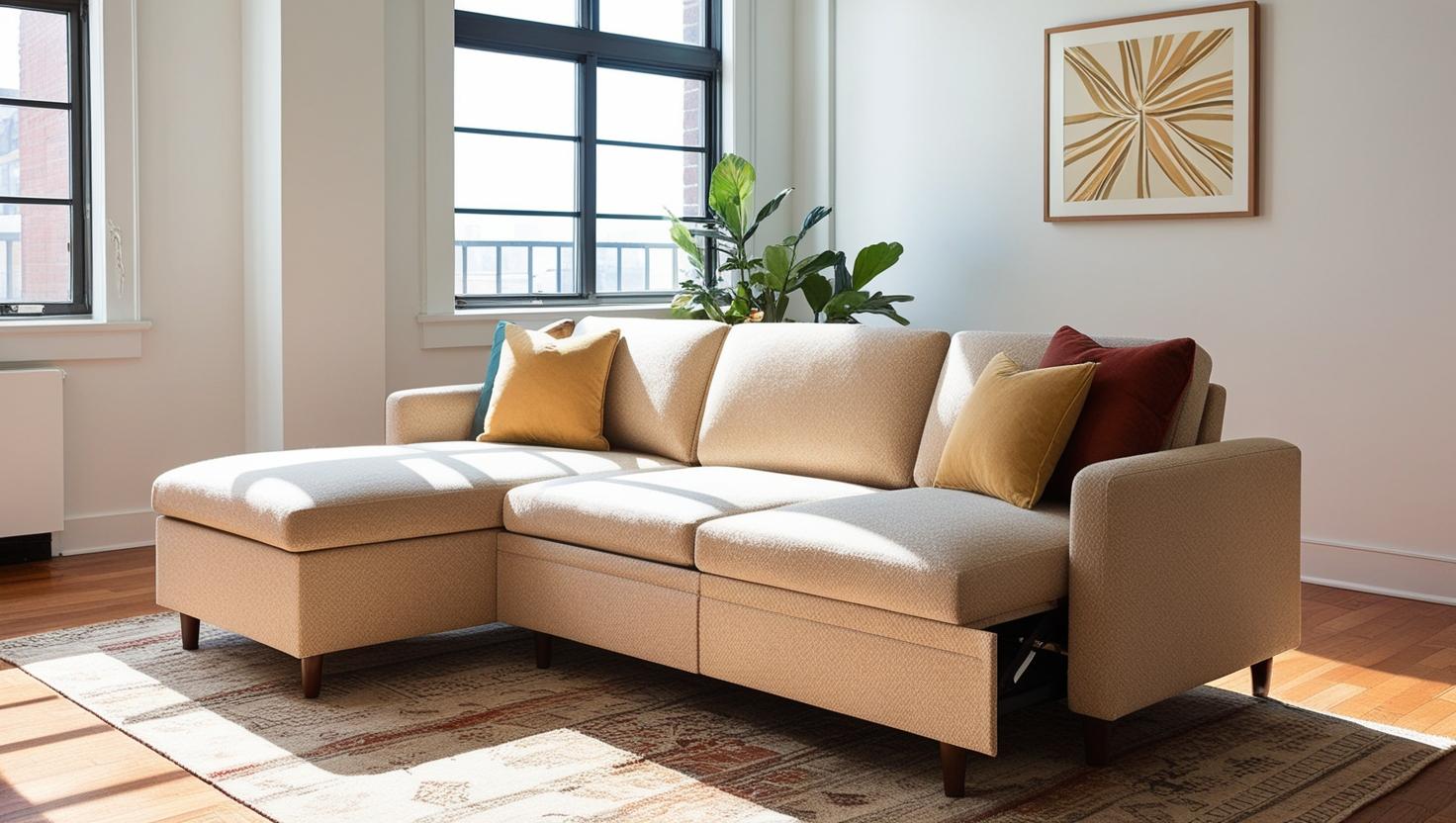
- Size and Dimensions: Measure your space carefully to ensure the sofa fits comfortably, leaving enough room for movement and other furniture. Consider the sofa's dimensions in both its standard and bed positions (if it's a sofa bed). Ensure there's enough clearance for easy movement and traffic flow.
- Type: Consider the different types of sofas available, such as loveseats, apartment-size sofas, and convertible sofas (sofa beds). Choose a type that suits your needs and space constraints.
- Style: Choose a style that complements your décor and the overall aesthetic of the room. Sofas with clean lines, low profiles, and neutral colors can make a room feel more spacious, while bulky or ornate sofas can make it feel smaller.
- Functionality: Consider features like storage or a chaise lounge for added functionality. If you need a sofa bed, think about how often you'll use the sleeping function and choose a mechanism that's easy to operate.
- Seat Depth: Seat depth affects the overall comfort and visual presence of a sofa. Deeper seats are generally more comfortable for lounging, while shallower seats are better for sitting upright. Choose a seat depth that suits your preference and space constraints.
- Mattress Type (for sofa beds): If you're choosing a sofa bed, consider the mattress type. Innerspring mattresses offer good support, while memory foam mattresses provide pressure relief and contouring.
- Mechanism Quality (for sofa beds): Look for a sofa bed with a durable and easy-to-operate mechanism. Test the mechanism in person if possible to ensure it's smooth and reliable.
- Sleeping Capacity (for sofa beds): Consider how many people will be sleeping on the sofa bed and choose a size accordingly. A twin-size sofa bed is suitable for one person, while a full-size or queen-size sofa bed can accommodate two people.
- Usage Needs (for sofa beds): Determine whether the sofa bed will primarily be used for sitting or sleeping. If it will be used for sitting more often, prioritize the comfort of the sofa. If it will be used for sleeping frequently, focus on the comfort of the mattress.
Top Sofa Choices for Small Spaces: Loveseats, Sectionals, Sofa Beds, and Futons
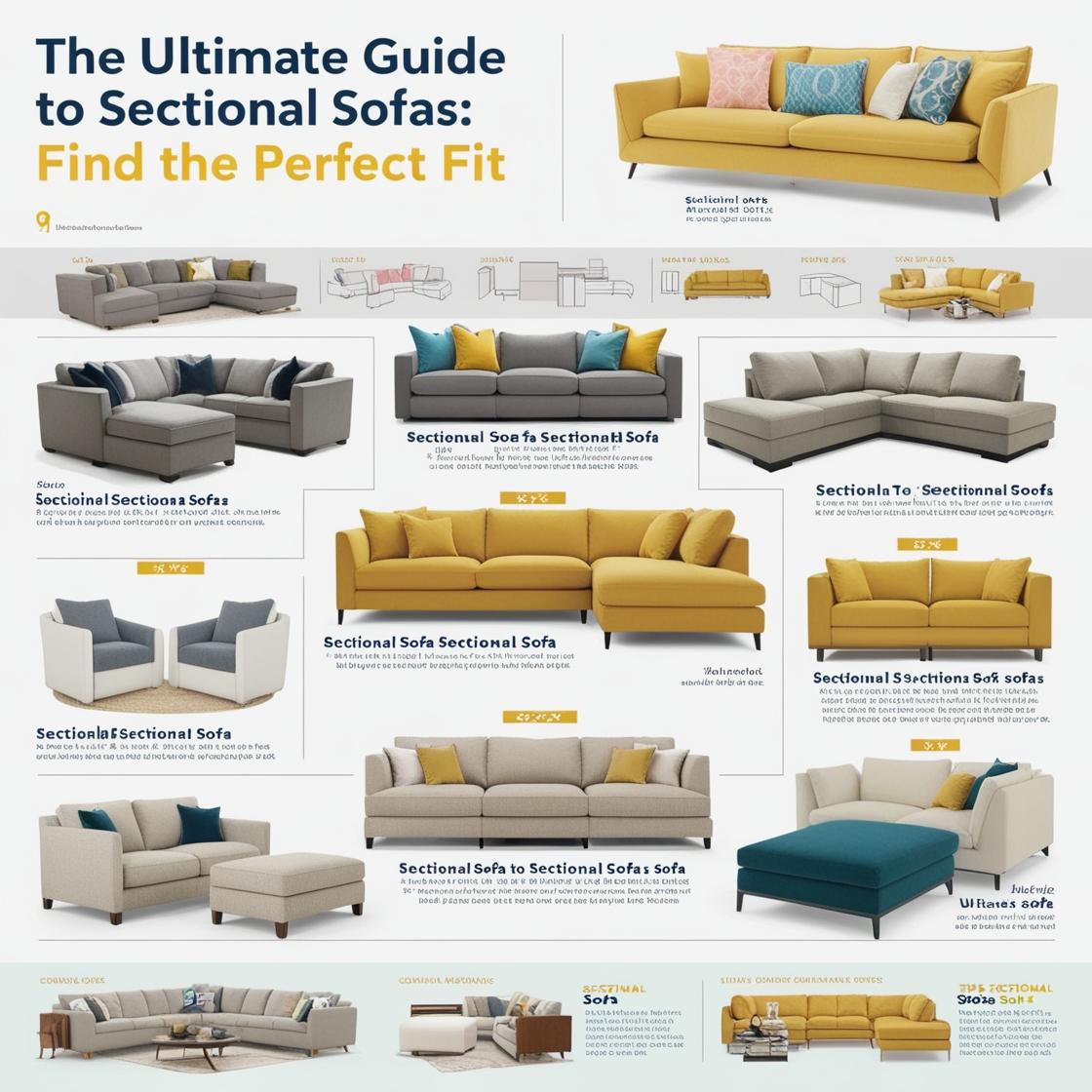
| Type | Description | Best Suited For |
|---|---|---|
| Loveseat | A small sofa with two seats, typically 52 to 64 inches wide. | Small apartments, studios, or smaller living rooms where space is limited. |
| Apartment-size sofa | A slightly larger sofa than a loveseat, typically 72 to 84 inches wide. | Small to medium-sized living rooms or apartments where more seating is needed. |
| Convertible sofa (sofa bed) | A sofa that converts into a bed, ideal for accommodating overnight guests. | Small apartments or homes where space is limited and a guest room isn't available. |
| Sectional sofa | A sofa made up of multiple sections that can be arranged in various configurations. | Larger living rooms or open-plan spaces where you want to define different areas. |
| Modular sofa | A type of sectional sofa with individual modules that can be rearranged to create different configurations. | Small spaces where flexibility and customization are desired. |
Different Types of Sectional Sofa Configurations
Sectional sofas come in various shapes and sizes, offering flexibility and customization for different living spaces. Here are some common types of sectional sofa configurations:
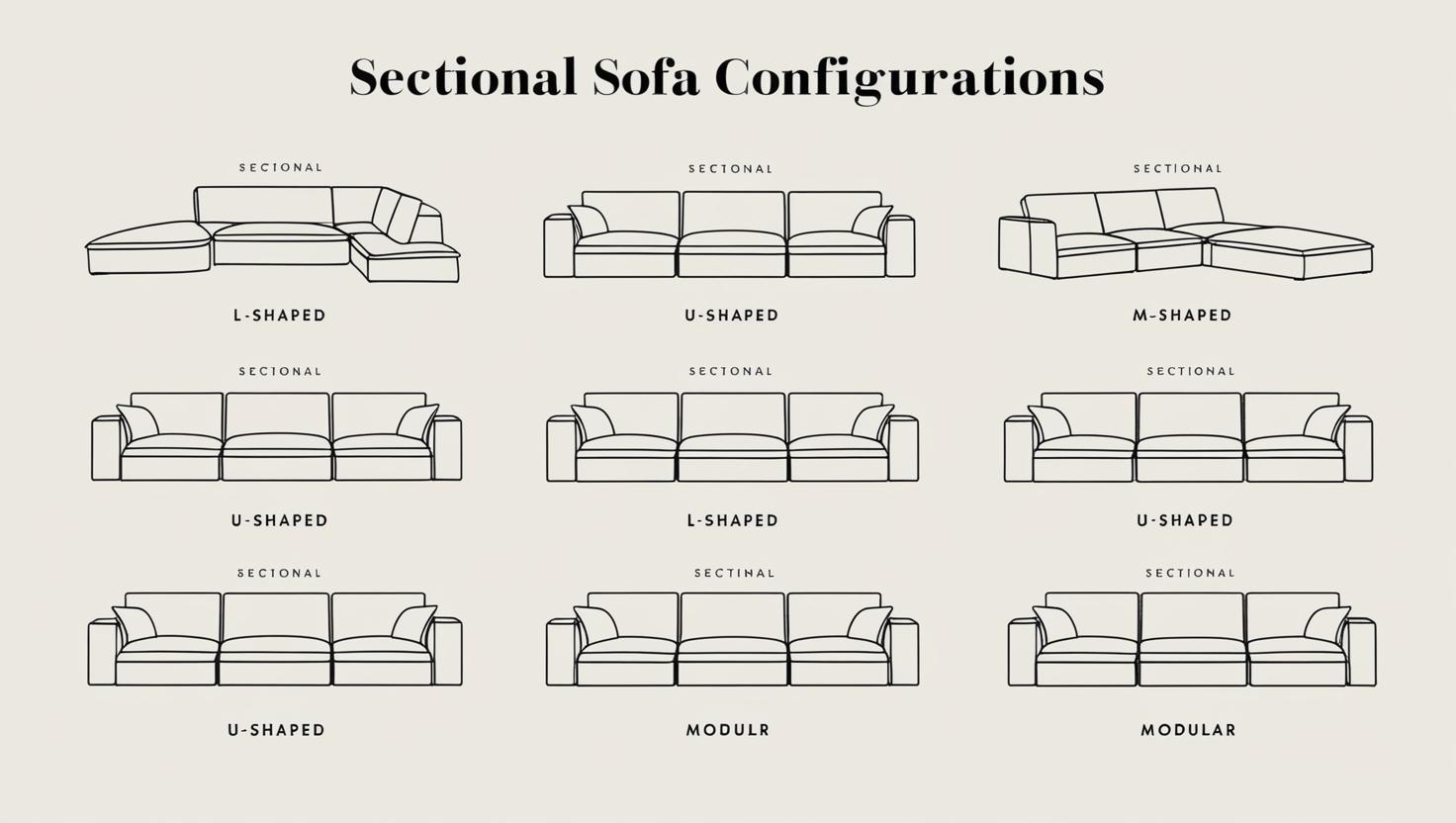
- L-shaped sectionals: These are the most common type, featuring an L-shaped design with a longer side and a shorter side. They are ideal for corner placement and can be customized with a chaise lounge or other features.
- U-shaped sectionals: These offer ample seating and are ideal for large living rooms or open floor plans. They create a defined conversation space and encourage interaction.
- Modular sectionals: These offer the ultimate flexibility, with individual modules that can be rearranged to create different configurations. You can customize the shape and size of the sectional to fit your space and needs.
- Chaise sectionals: These feature an extended section, perfect for lounging and stretching out. They are ideal for living rooms where you want to create a relaxing space.
- Corner sectionals: These are similar to L-shaped sectionals but typically have a 90-degree corner wedge with a one-armed sofa or loveseat on both sides.
Buying a Sofa for a Small Space: Expert Tips
Finding the right sofa for your small apartment is a crucial decision. It's often the centerpiece of your living space, and you want it to be both stylish and functional. Here's a step-by-step guide to help you make the perfect choice:
Measure Your Space Before Buying a Sofa
- Overall Dimensions: Use a tape measure to determine the maximum sofa width, depth, and height that will fit comfortably in your space. Don't just measure wall space – consider walkways, doorways, and any tight corners the sofa needs to navigate.
- Seat Depth: Pay attention to seat depth, especially if you prefer a deeper sofa for lounging. A deeper seat might require a smaller overall width to maintain balance in a small room.
- Visual Weight: Consider the sofa's visual weight. Sofas with legs and a low profile tend to look lighter and less bulky in small spaces .
- Doorways and Hallways: Measure doorways and hallways to ensure the sofa can be delivered and maneuvered into your apartment.
Consider Your Lifestyle and Living Room Layout
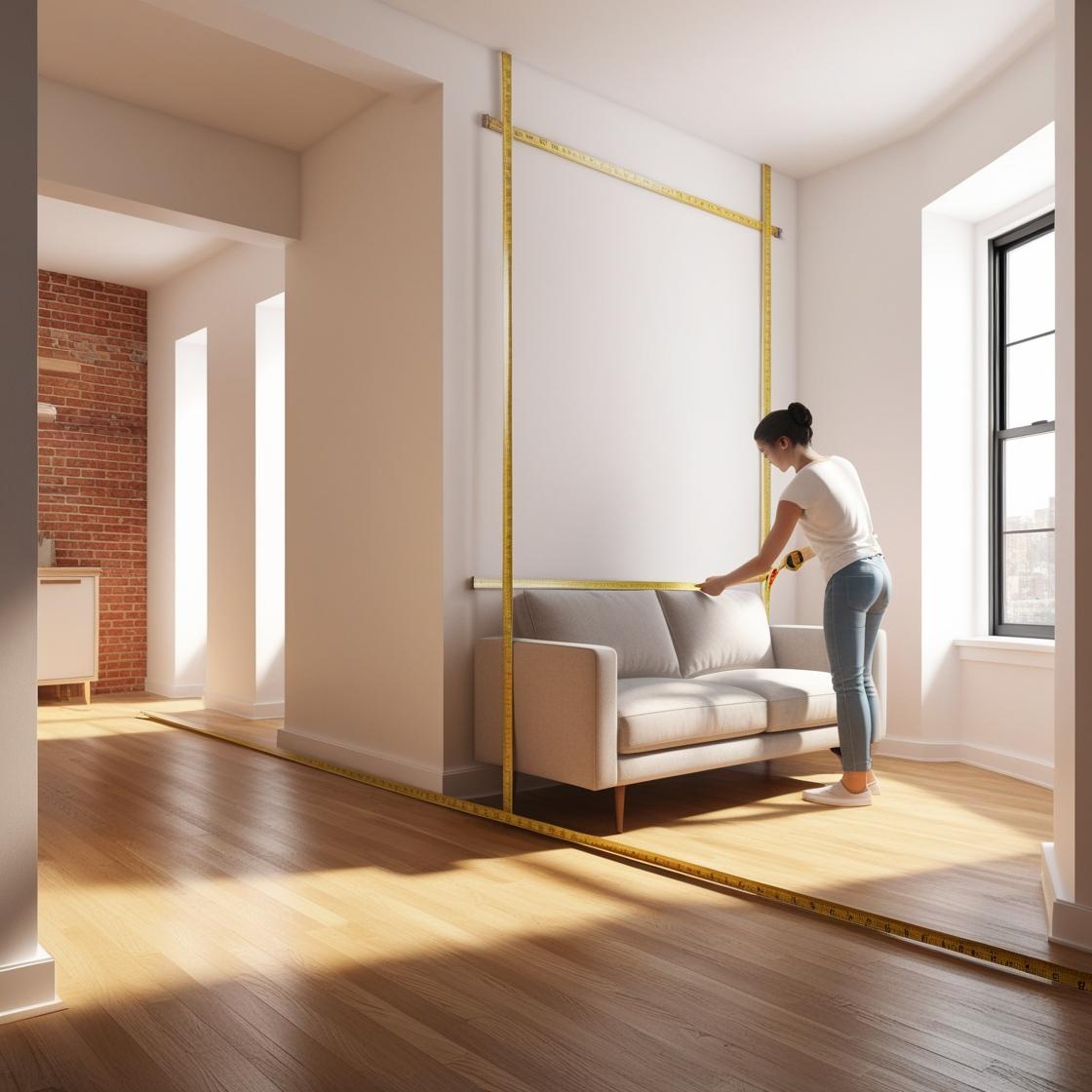
- Traffic Flow: Visualize how the sofa will fit in your living room and how it will affect traffic flow. Leave enough space for people to move around comfortably.
- Focal Point: Decide if the sofa will be the focal point of your living room or if it will complement other furniture pieces.
- Seating Needs: How many people do you need to seat regularly? Do you frequently entertain guests?
- Lifestyle: Do you have pets or children? If so, choose a durable and easy-to-clean fabric like microfiber or leather.
Multifunctional Sofas for Small Spaces: Storage & More
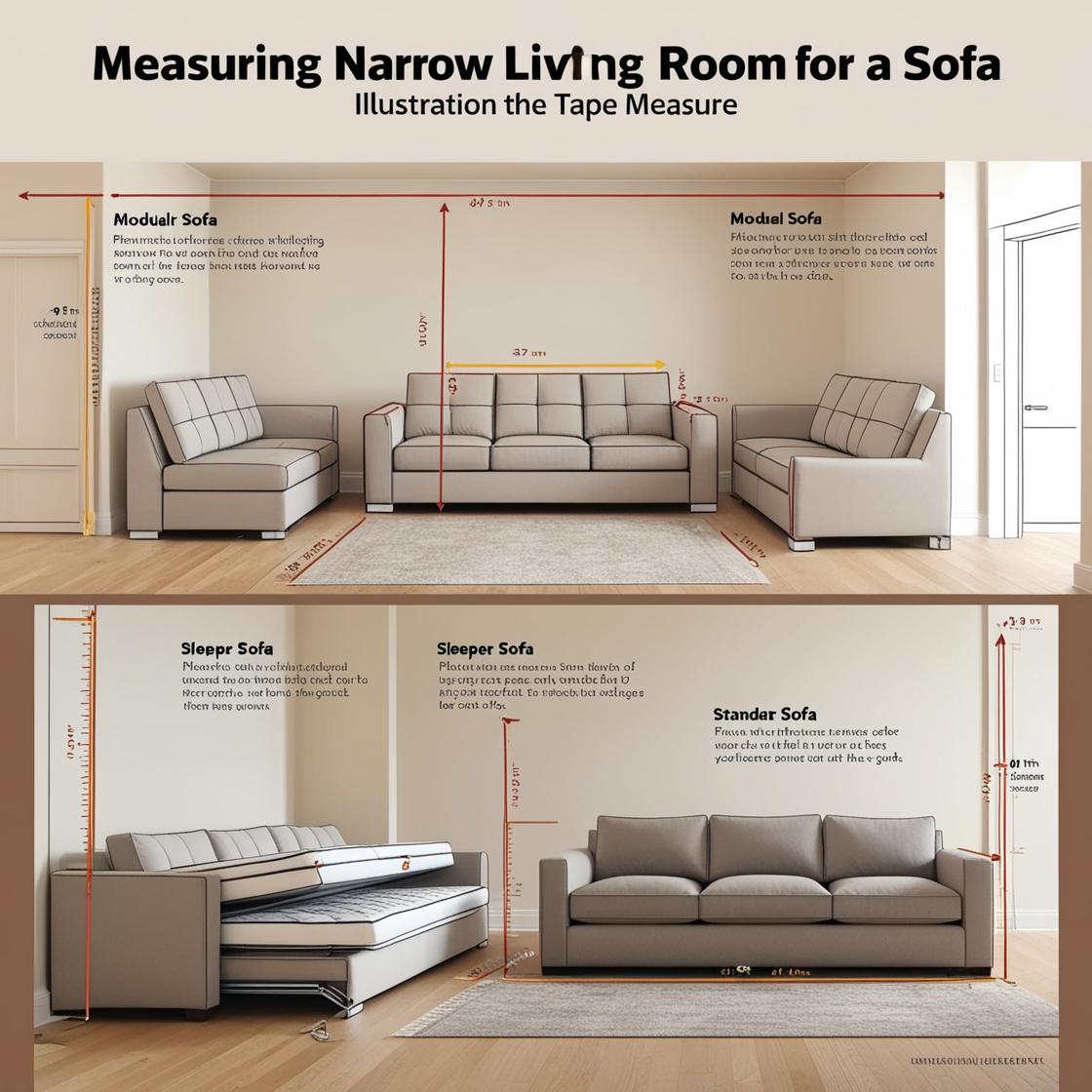
- Storage: Maximize space with sofas that offer built-in storage compartments for blankets, pillows, or other items.
- Sleeper Options: If you need a guest bed, consider a sofa bed or futon. Look for comfortable mattresses and easy-to-use mechanisms.
- Modular Designs: Modular sofas allow you to customize the configuration to fit your space and needs .
Prioritize Comfort When Choosing a Sofa
- Cushion Support: Look for sofas with supportive cushions made of high-density foam, pocket coils, or down filling.
- Ergonomics: Consider the sofa's ergonomics and how it supports your back and posture.
- Try Before You Buy: If possible, visit a store and sit on the sofa to test its comfort level.
Choosing the Right Sofa Style and Fabric
- Style: Select a sofa style that complements your existing décor and personal preferences.
- Fabric: Consider the durability, cleanability, and comfort of the fabric.
- Performance Fabrics: Offer stain resistance and durability, making them ideal for pets and children.
- Leather: Durable and stylish, but may require regular conditioning.
- Velvet: Soft and luxurious, but can be more prone to showing wear and tear.
- Linen: Breathable and natural, but may wrinkle easily.
Invest in a High-Quality Sofa
- Quality Construction: Look for sofas with sturdy frames made of kiln-dried hardwood.
- Check Reviews: Read online reviews to get an idea of the sofa's comfort, durability, and overall quality.
- Consider the Warranty: Check the manufacturer's warranty to protect your investment.
Consider Delivery and Assembly When Buying a Sofa
- Delivery Options: Consider the delivery options and costs. Some companies offer white-glove delivery, which includes bringing the sofa into your home and setting it up.
- Assembly: Check if the sofa requires assembly and if assembly services are available.
By following these steps and considering your specific needs and preferences, you can find the perfect sofa to enhance your small apartment living space.
Measuring for a Sofa in a Small Living Room: Easy Guide
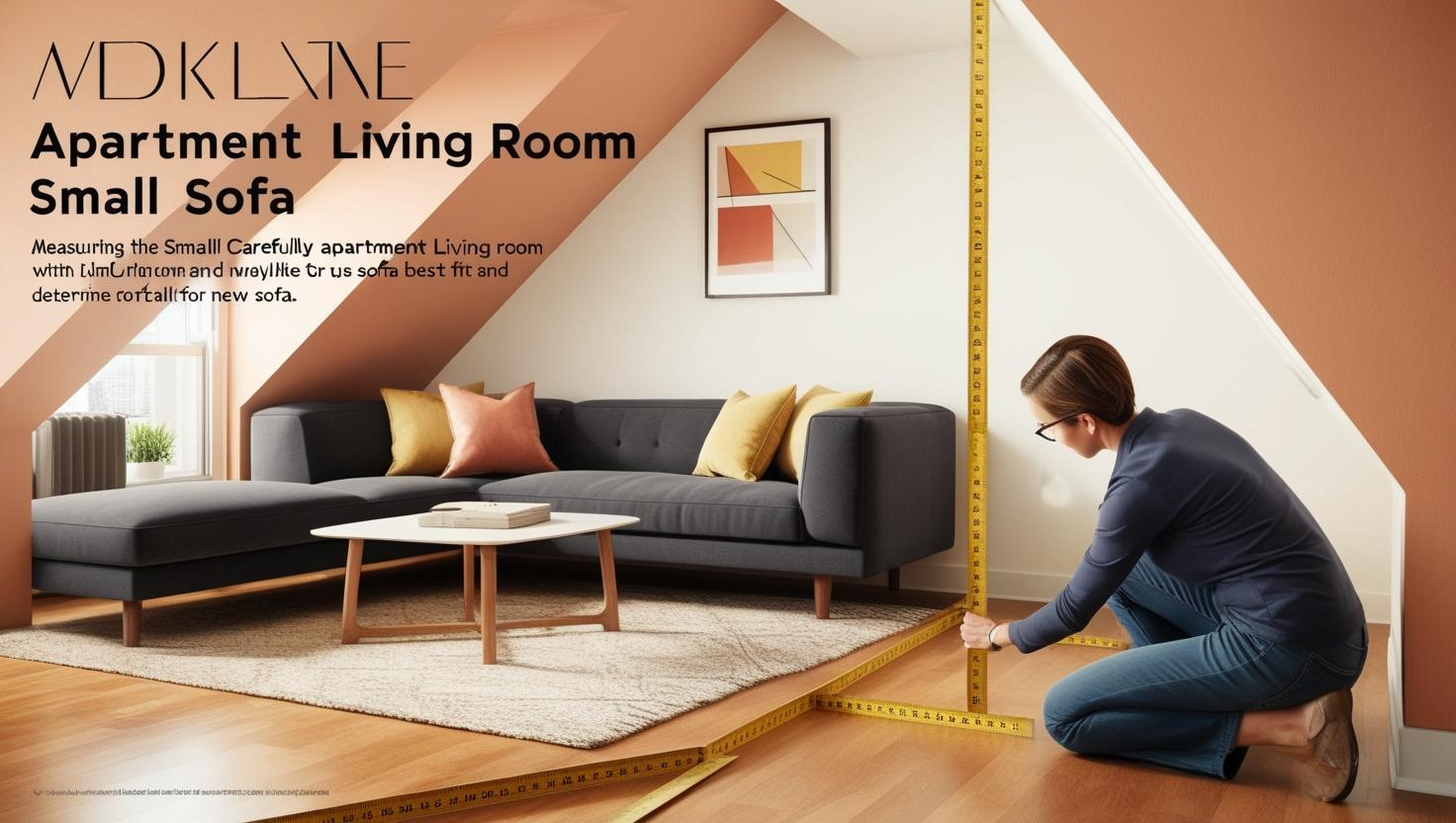
How to Measure for a Sofa in a Small Apartment: Checklist
- Measure Every Nook and Cranny: Don't just measure the main wall space. Account for any angled walls, protruding features (like radiators or built-in shelves), and the depth of alcoves.
- Account for Door Swings: Consider the swing radius of doors and how they might affect sofa placement.
- Create a Floor Plan: Sketch a simple floor plan of your living room, marking the dimensions and any awkward angles. This will help you visualize different sofa placements.
- Consider Non-Traditional Shapes: Explore sofas with unconventional shapes, like curved sofas or modular sectionals, which might fit better in awkward corners.
- Don't Forget Vertical Space: Measure the height of ceilings and any low-hanging light fixtures to ensure adequate clearance.
Tips for Measuring for a Sofa in a Small Apartment with Awkward Angles
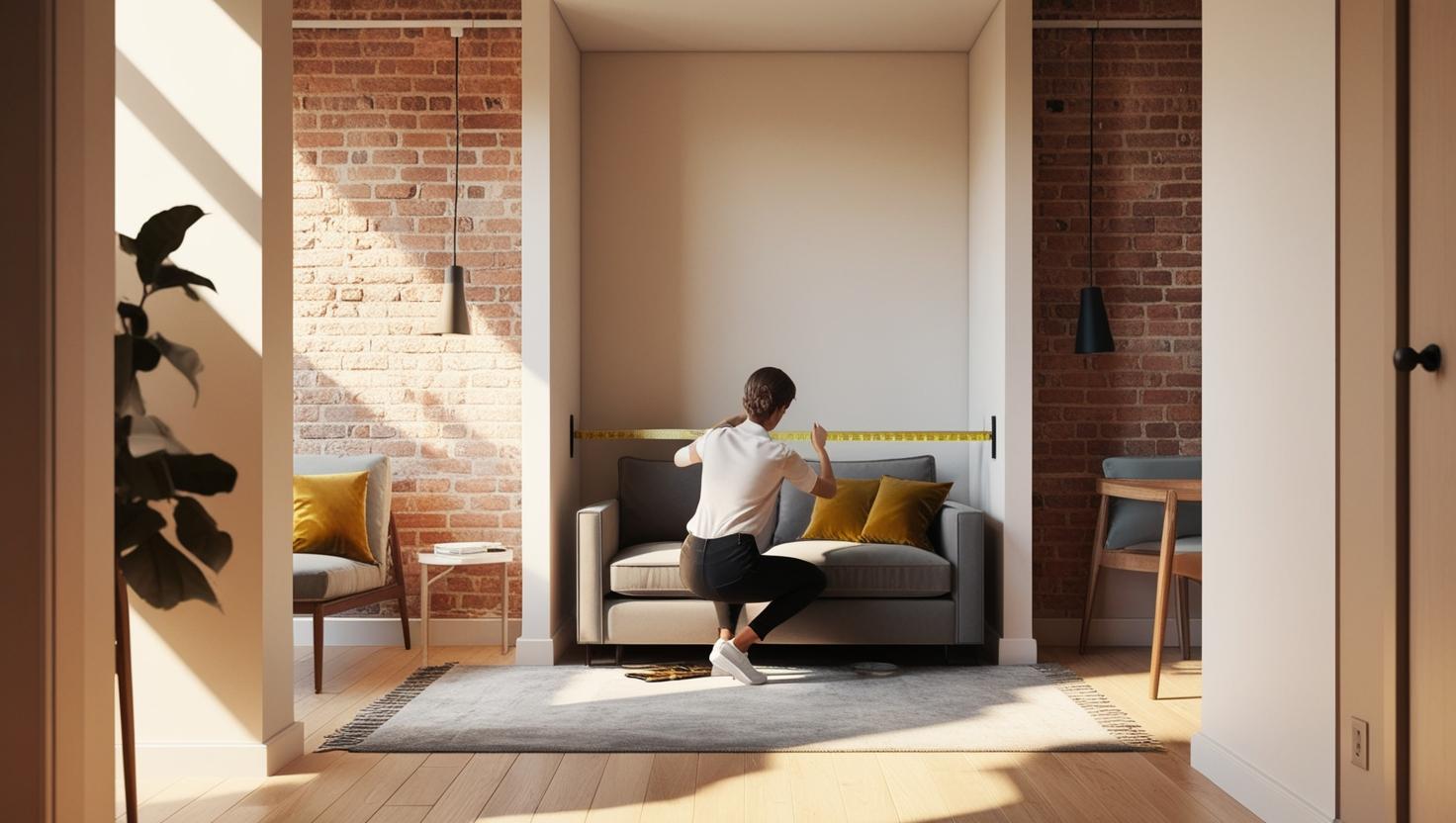
- Use Painter's Tape: Use painter's tape to mark out the sofa's dimensions on the floor. This helps you visualize how it will fit in the space.
- Take Photos: Take photos of your living room from different angles to help you remember the layout and any obstacles.
- Consult with Furniture Experts: If you're unsure about measurements or sofa placement, consult with a furniture store's design consultant or an interior designer.
Measuring for a Sofa in a Narrow Living Room: Step-by-Step
Narrow living rooms require careful planning to maximize space and maintain a comfortable flow. Here's how to measure for a sofa in a narrow space:
How to Measure a Narrow Living Room for a Sofa: Checklist
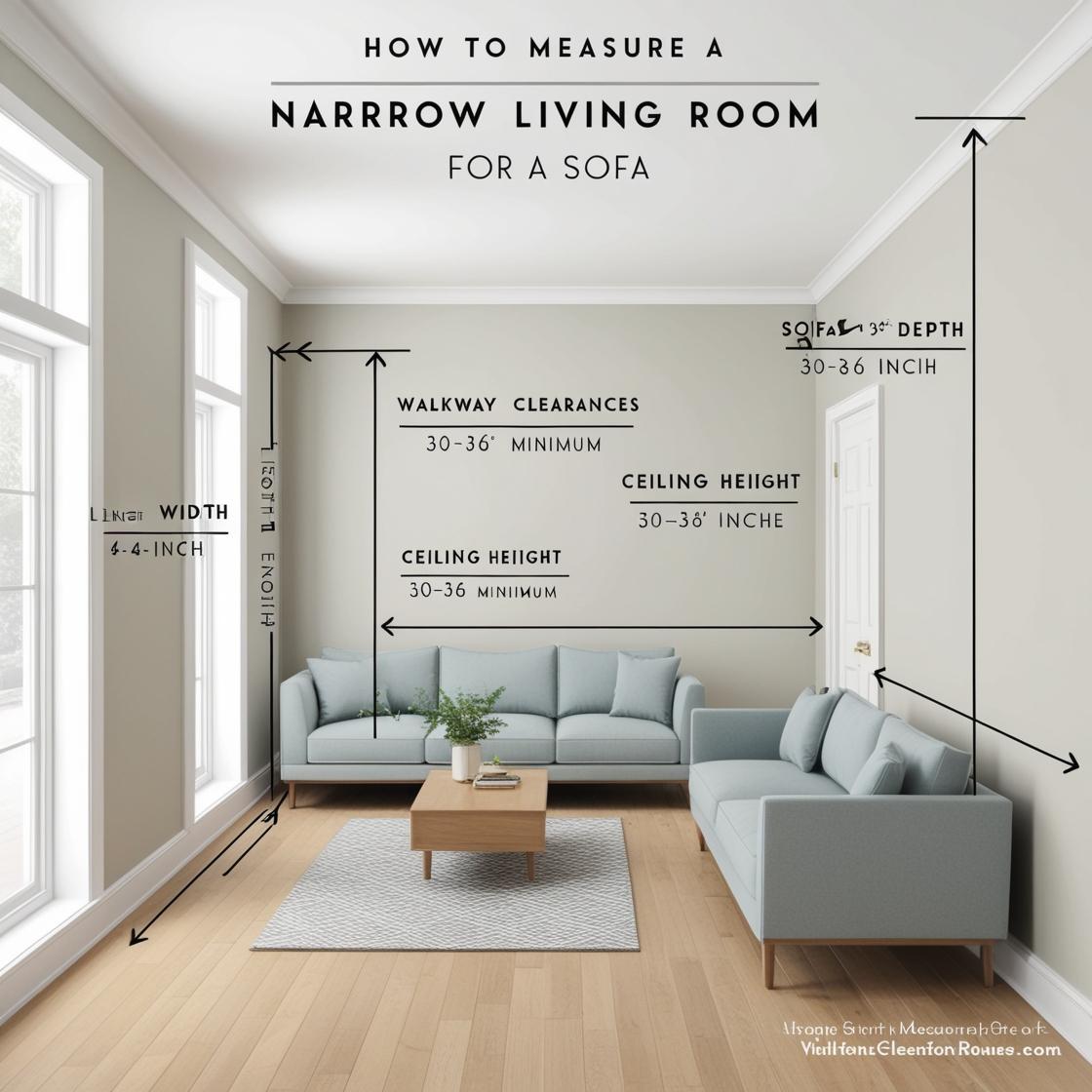
- Measure the Length and Width: Measure the length and width of the room to determine the maximum sofa size that will fit.
- Account for Walkways: Leave enough space for comfortable walkways on either side of the sofa. Aim for at least 30-36 inches of clearance.
- Consider Vertical Space: Measure the height of the ceiling to ensure you have enough clearance for a taller sofa.
- Think About Sofa Placement: Will the sofa be placed against a wall or floating in the room?
- Consider Sofa Depth: Pay attention to the sofa's depth, as a deeper sofa might make the room feel more cramped.
Tips for Measuring a Narrow Living Room for a Sofa
FAQ About Sofas for Small Spaces
Lorem ipsum dolor sit amet, consectetur adipiscing elit, sed do eiusmod tempor incididunt ut labore et dolore magna aliqua. Ut enim ad minim veniam, quis nostrud exercitation ullamco laboris nisi ut aliquip ex ea commodo consequat. Duis aute irure dolor in reprehenderit in voluptate velit esse cillum dolore eu fugiat nulla pariatur. Excepteur sint occaecat cupidatat non proident, sunt in culpa qui officia deserunt mollit anim id est laborum.
Which Sofa Is Best for a Small Living Room?
Small apartments often come with unique challenges, like slanted walls, alcoves, or oddly-shaped corners. Here's how to measure for a sofa in these tricky spaces:
For small living rooms, compact loveseats with a minimalist design are generally the best sofa option. These sofas typically seat two people and have a streamlined profile, making them ideal for maximizing space without sacrificing seating .
Sofa Colors That Make a Small Living Room Look Bigger
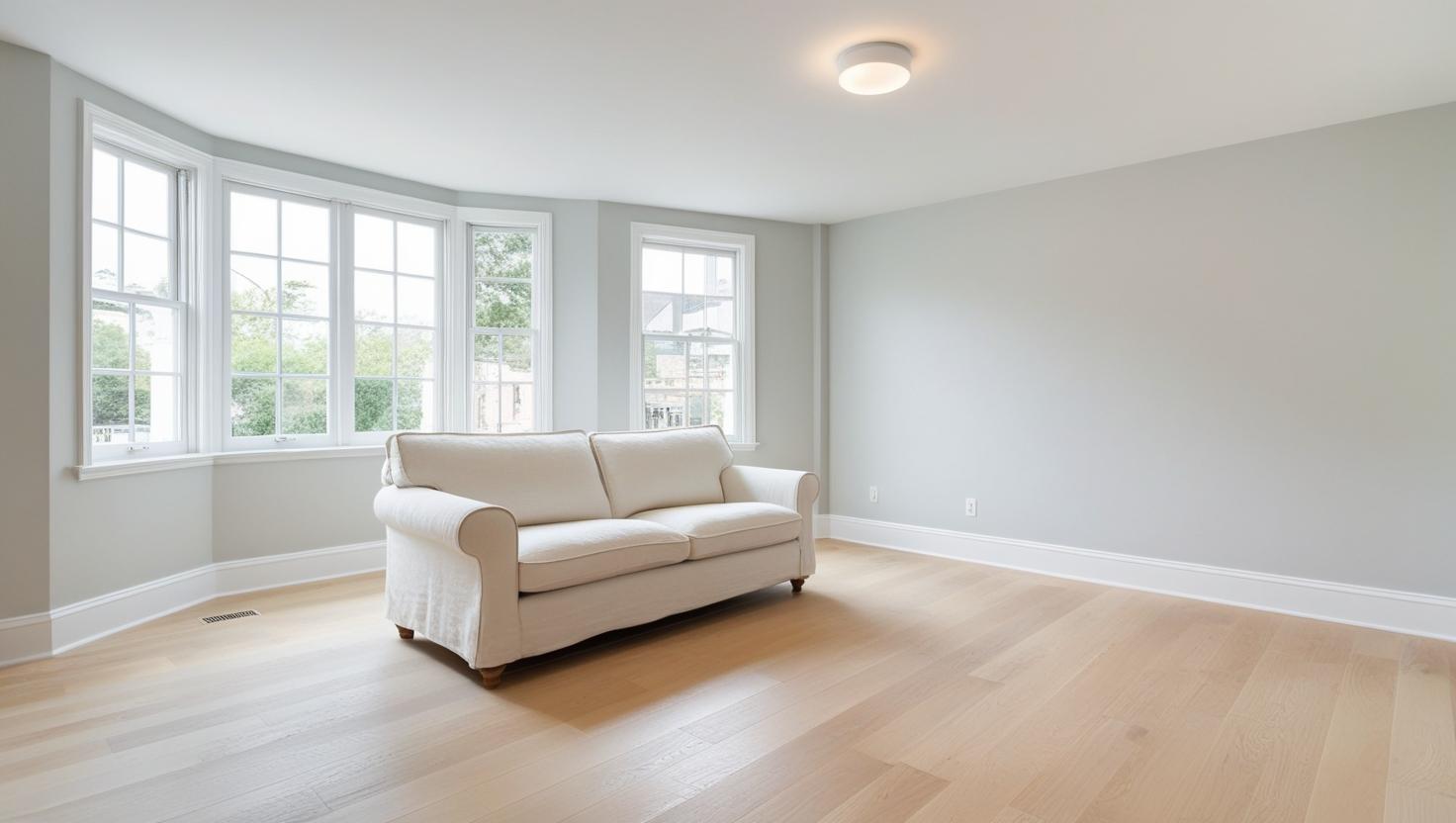
Light and neutral colors are generally best for small rooms because they reflect light and make the space feel more open and spacious. Soft beige, creamy white, and light gray are particularly good choices. These colors create a sense of airiness and can make the room feel less cramped.
However, the best color ultimately depends on your personal preference and the overall design of your room. If you prefer bolder colors, you can still incorporate them into a small space by choosing a sofa in a darker shade and balancing it with lighter walls and accessories.
Firm vs. Soft Sofa: Choosing the Right Sofa for a Small Living Room
The best firmness for a sofa depends on your personal preference and how you plan to use it. If you prefer structured support and a tidier look, a firmer sofa might be a better choice. If you prefer to sink into your sofa and prioritize a relaxed feel, a softer sofa might be more comfortable.
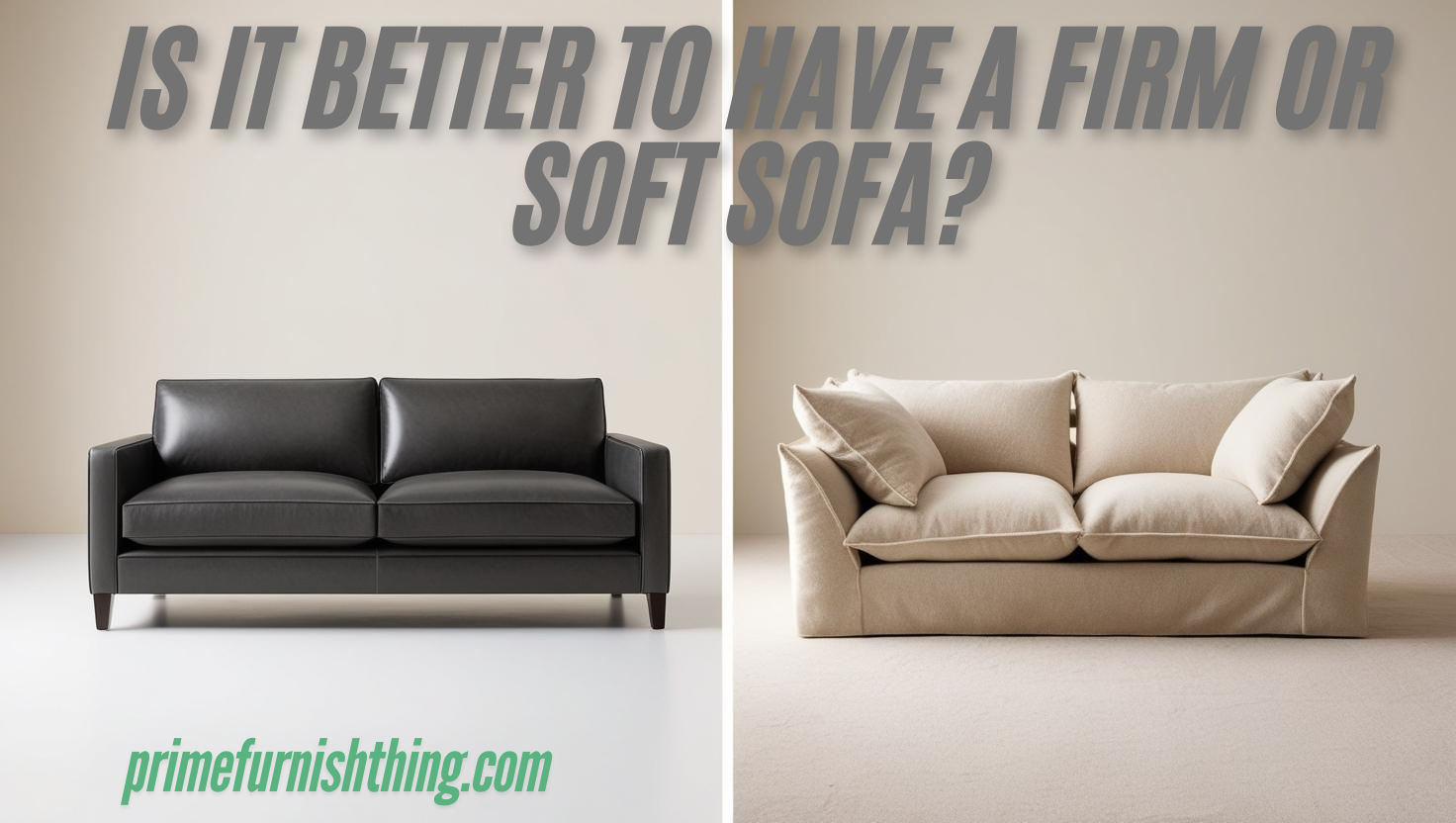
Consider your body type and how you typically use a sofa. If you have back problems or prefer to sit upright, a firmer sofa might be more supportive. If you like to lounge and relax, a softer sofa might be more comfortable.
Sofa Styles That Make a Small Living Room Look Bigger
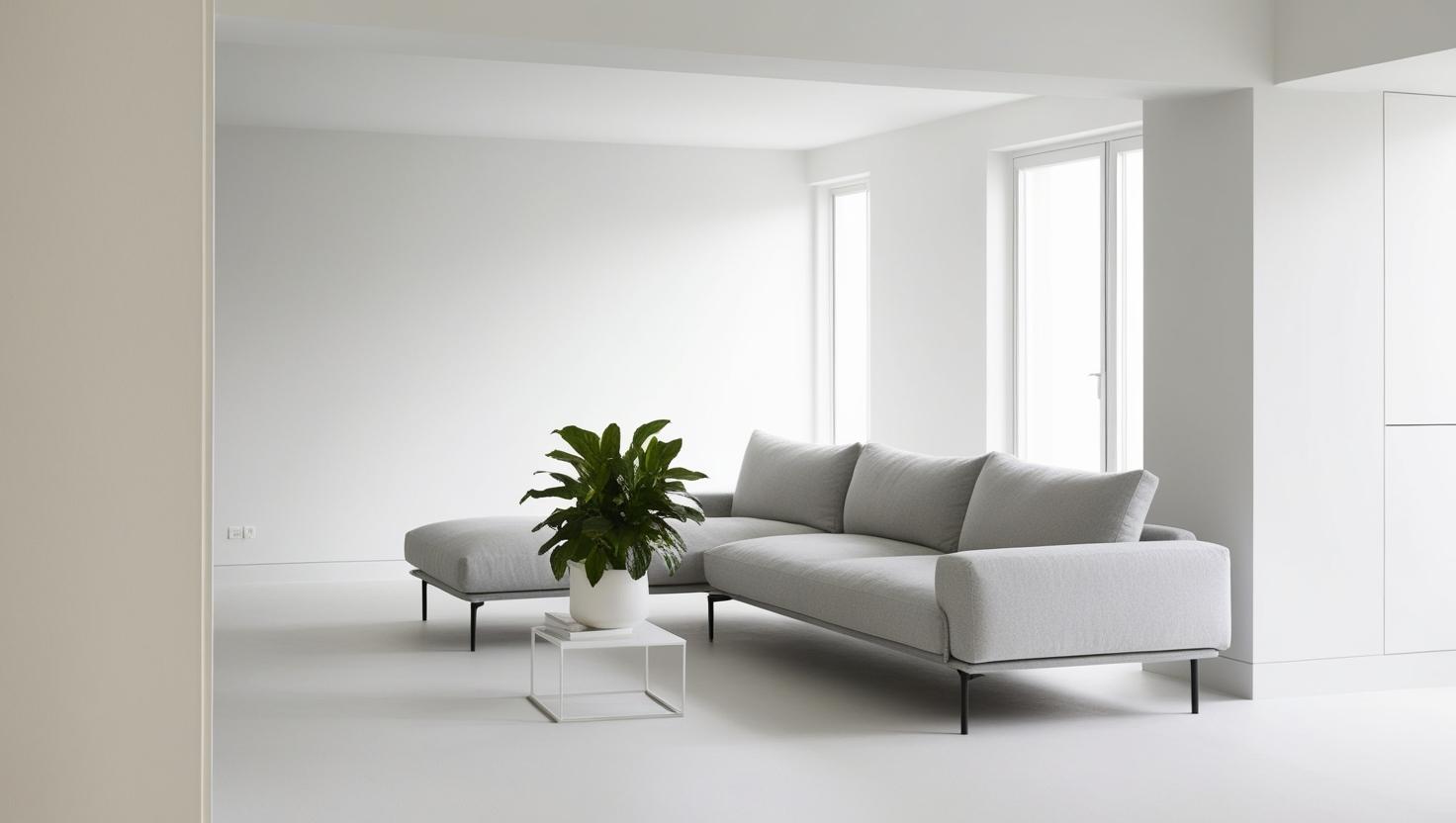
Sofas with a lighter visual presence tend to make a room look bigger. This includes sofas with legs, minimalist designs, and those with low profiles. Light-colored sofas can also make a room feel more spacious because they reflect light.
Sofas with a lighter visual presence tend to make a room look bigger. This includes sofas with legs, minimalist designs, and those with low profiles. Light-colored sofas can also make a room feel more spacious because they reflect light.
Here are some sofa styles that can make a room look bigger:
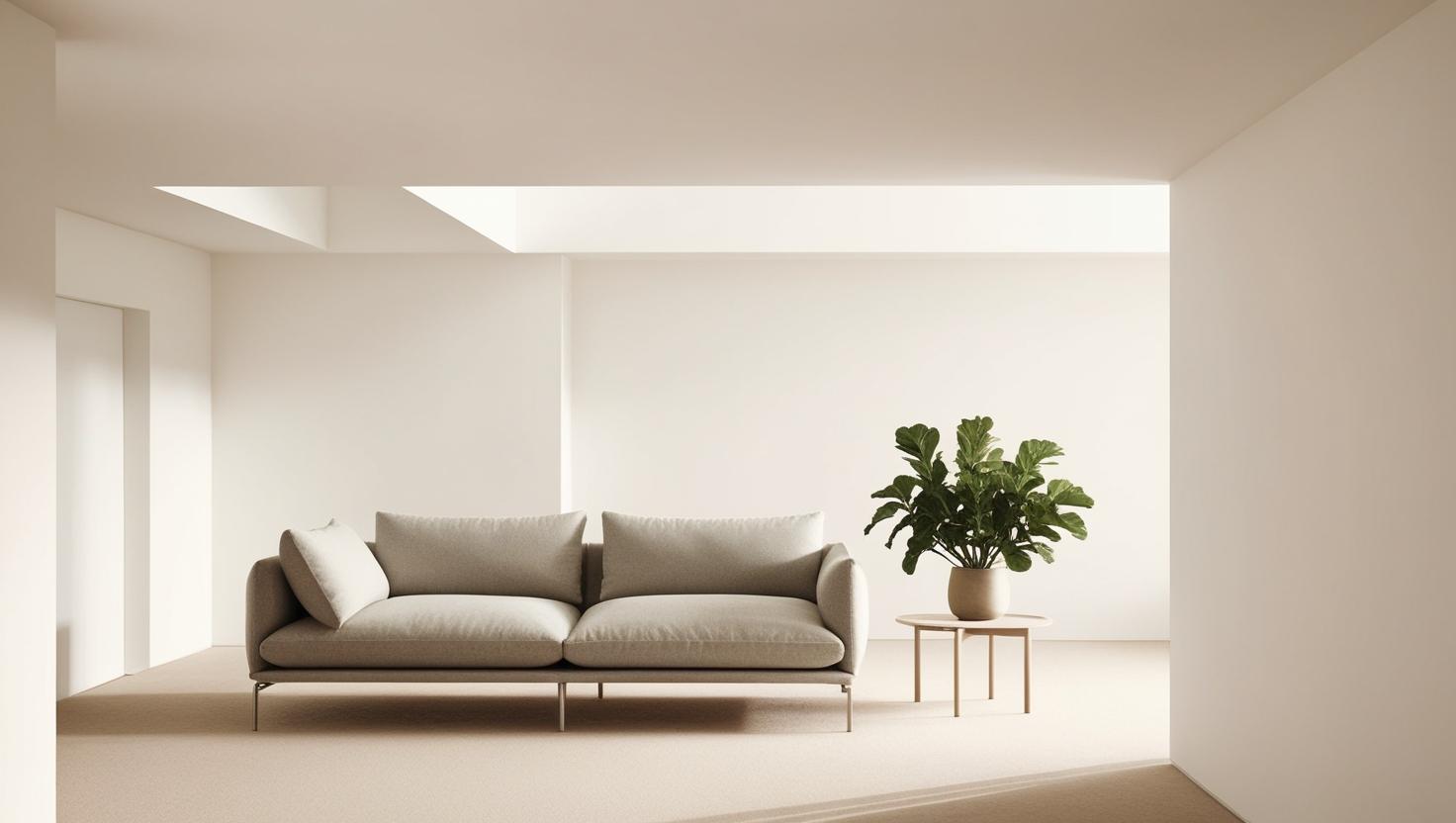
- Sofas with legs: Sofas with exposed legs create a sense of visual lightness and allow light to flow underneath, making the room feel more open.
- Minimalist designs: Sofas with clean lines and simple silhouettes avoid visual clutter and make the room feel more spacious.
- Low-profile sofas: Sofas with lower backs and arms create a sense of height and openness in the room.
- Light-colored sofas: Light colors reflect light, making the room feel brighter and more spacious.
Sofa Bed Ideas and Inspiration for Small Spaces
Sofa beds are a great way to maximize space in a small apartment or home. Here are some tips and tricks for using sofa beds effectively in small spaces:
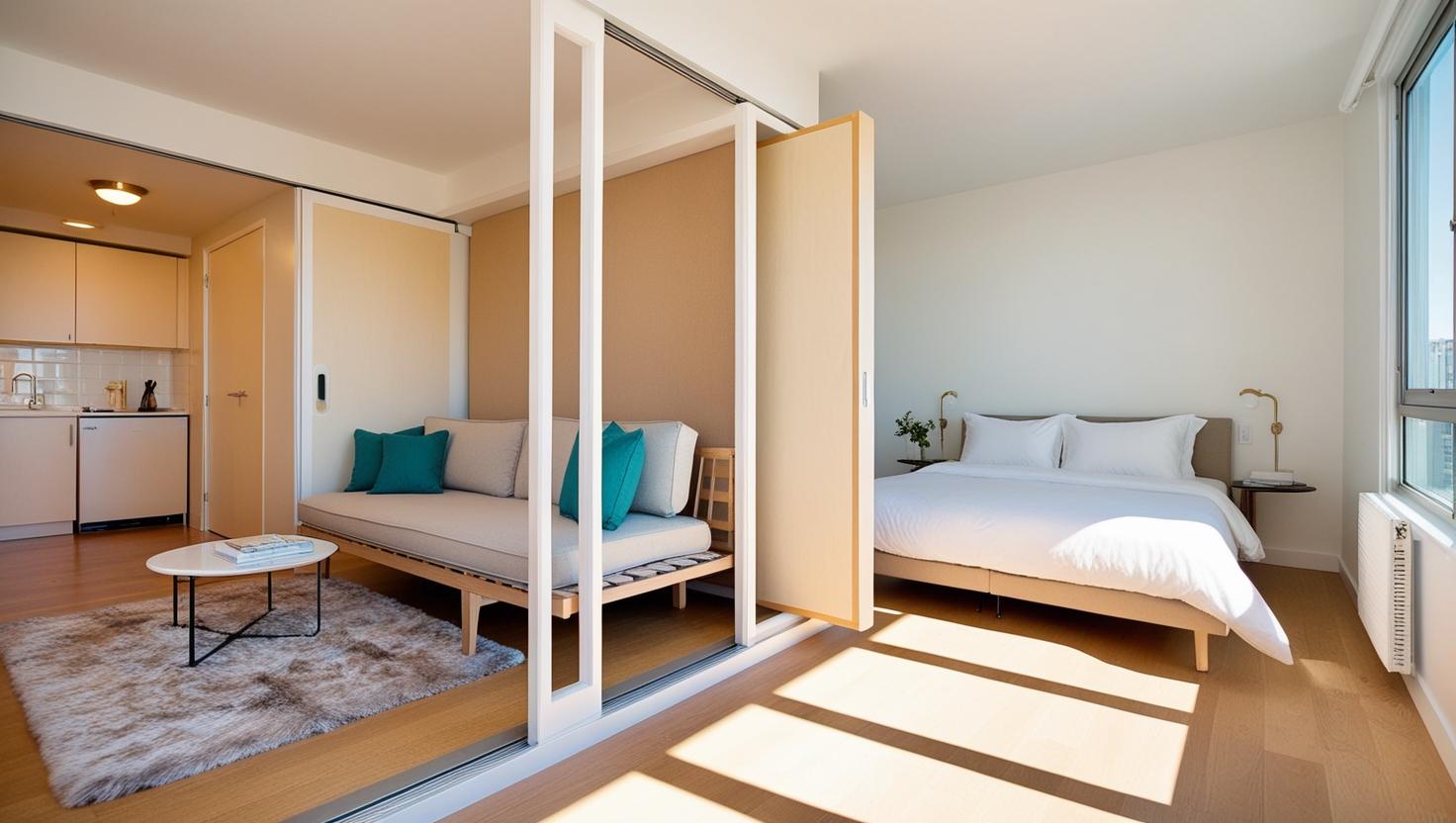
- Use as a room divider: In studio apartments, a sofa bed can be used as a room divider to create separate living and sleeping areas.
- Place against a wall: In larger rooms, consider placing the sofa bed against a wall to ensure easy transformation without moving furniture around.
- Accessorize: Add throw pillows and blankets to enhance comfort and style.
- Lighting: Use soft, warm lighting to create a cozy atmosphere.
- Color scheme: Choose light, neutral colors for walls and furnishings to create an illusion of more space.
By following these tips, you can make the most of your sofa bed and create a functional and stylish living space.
Conclusion



